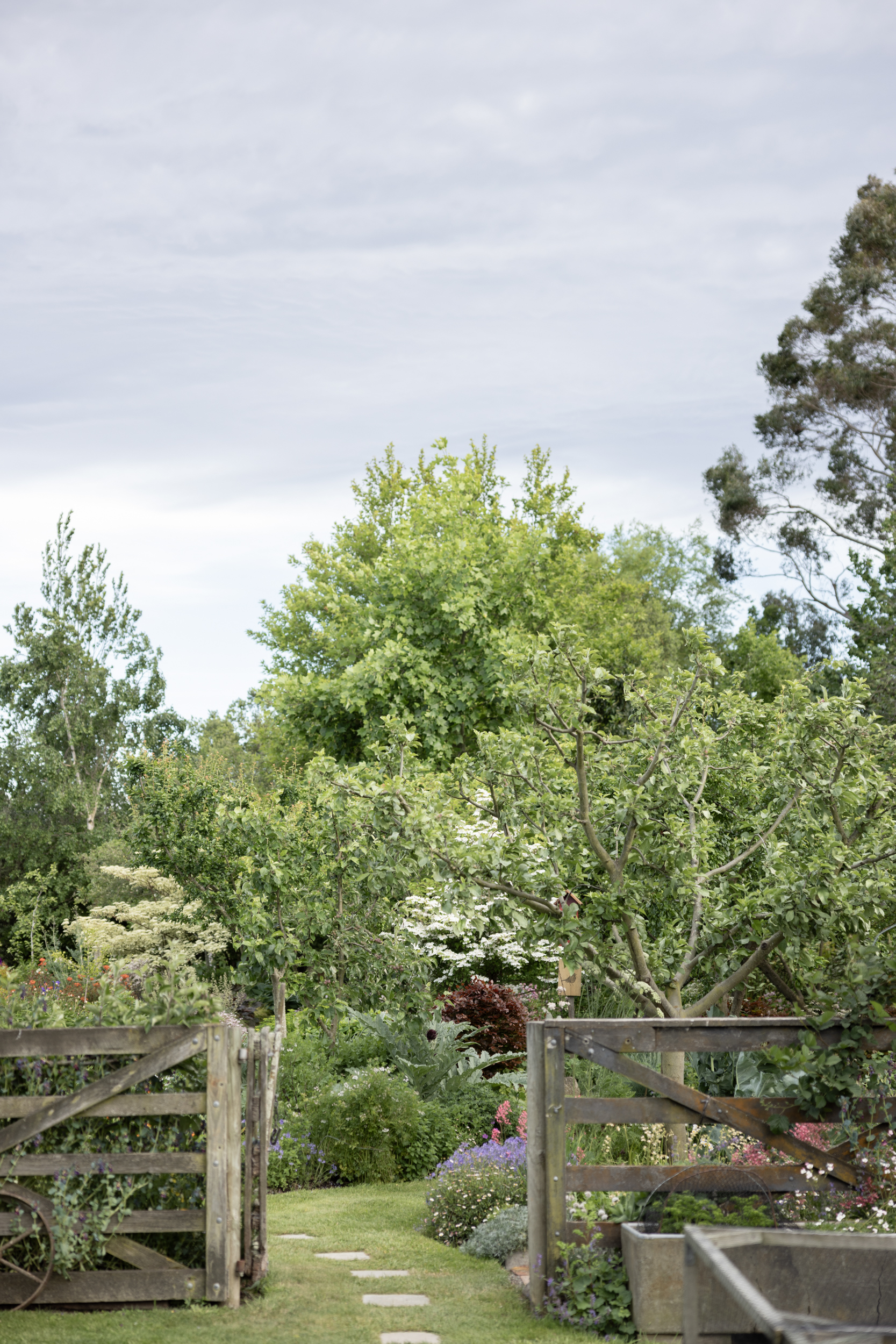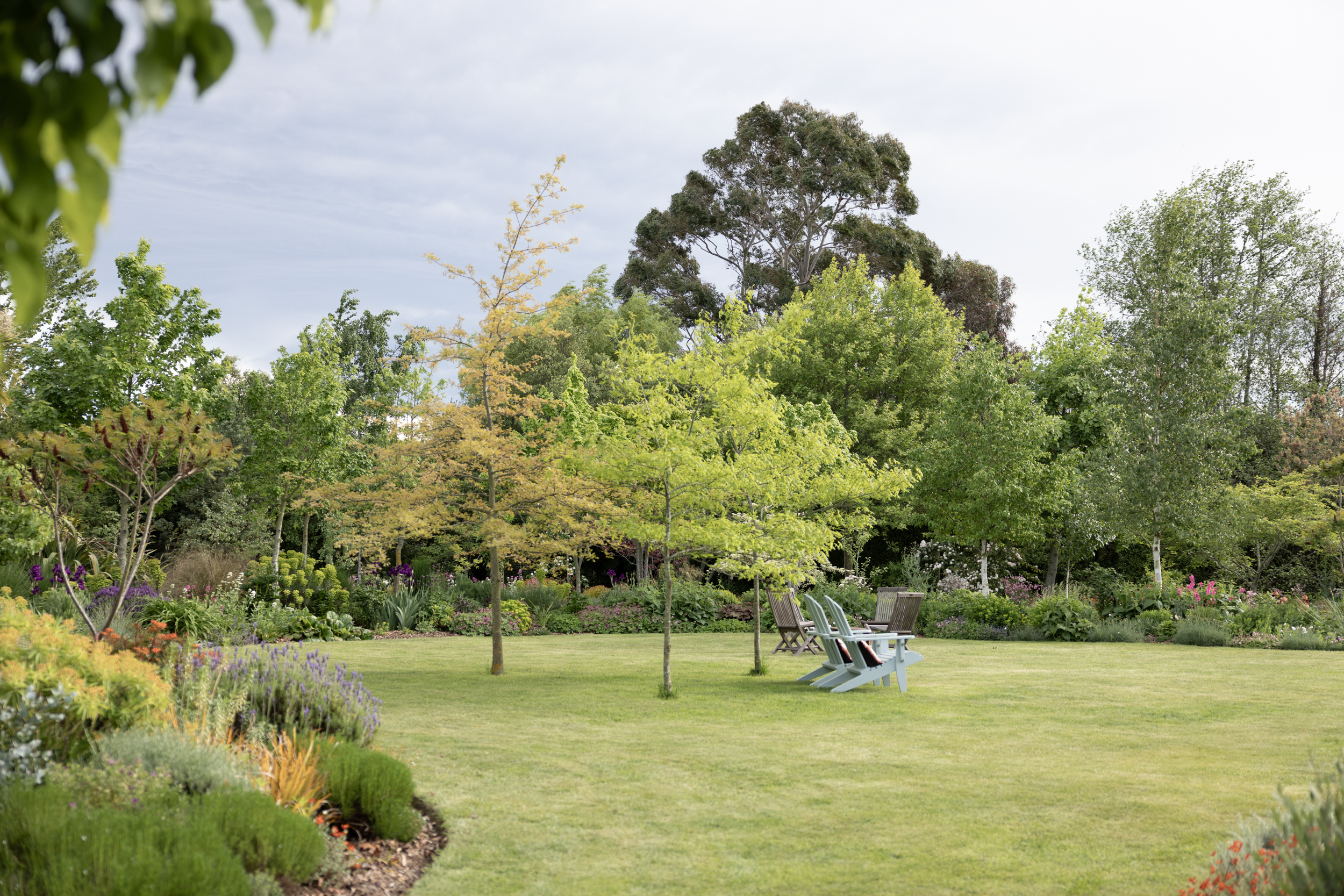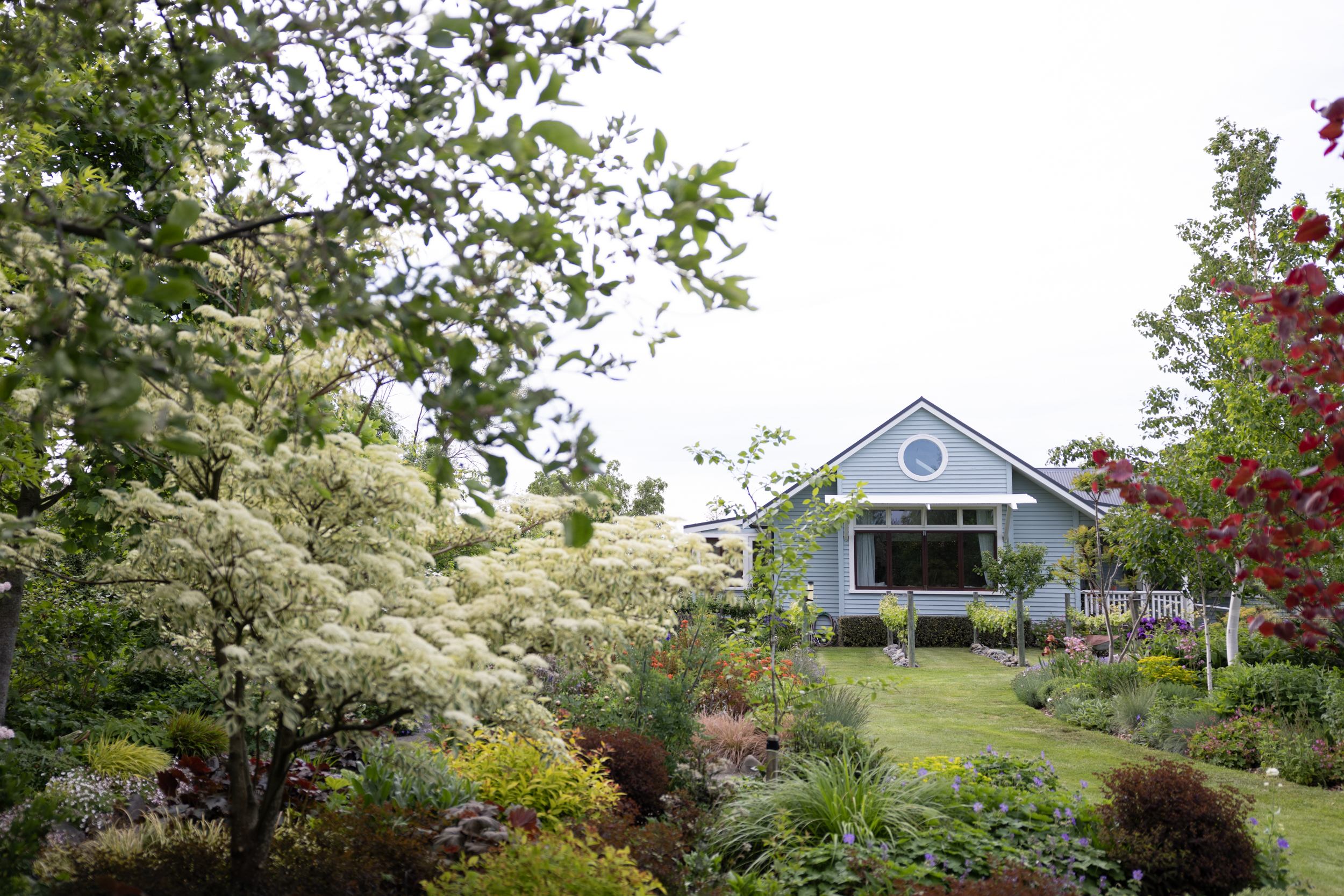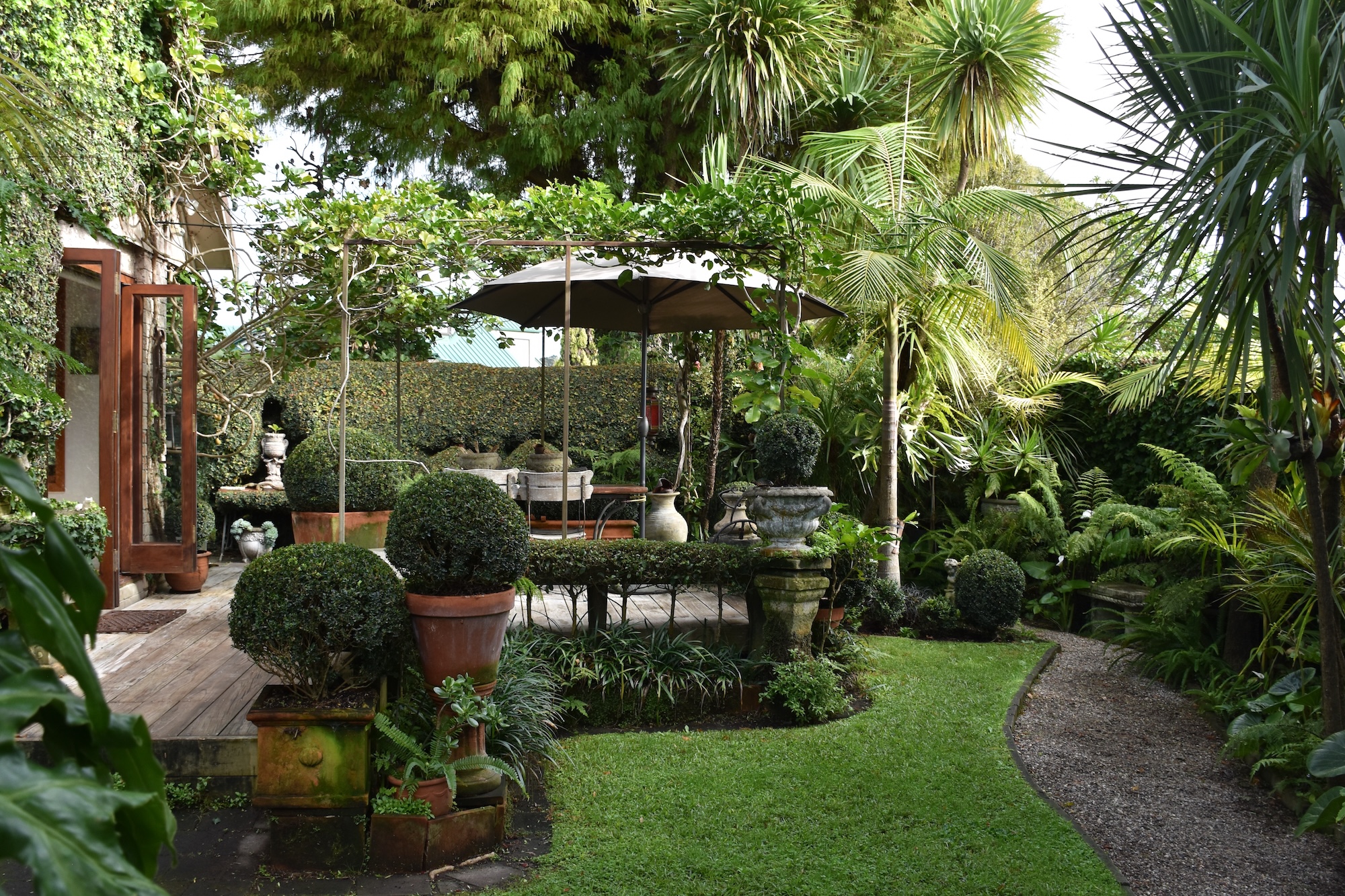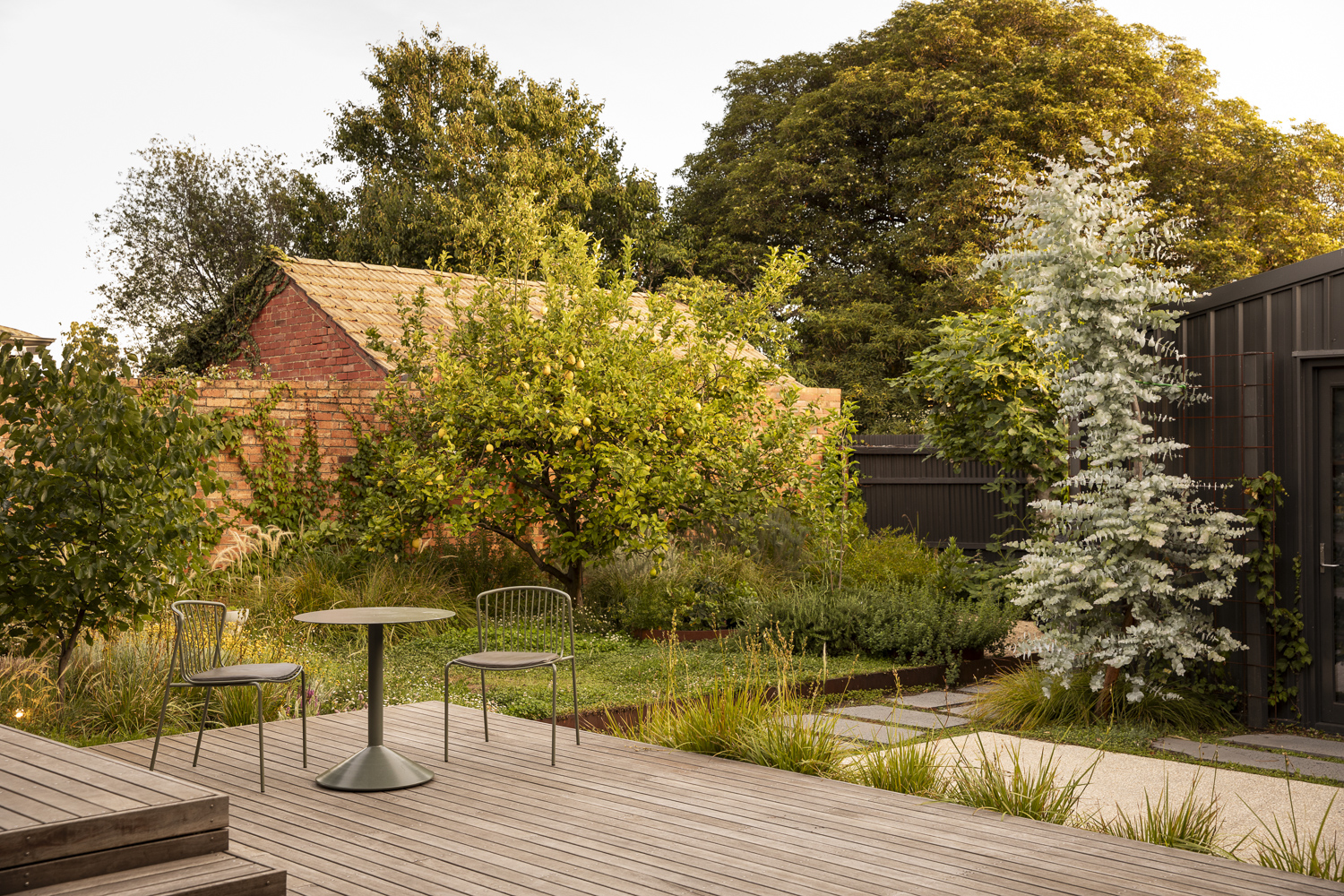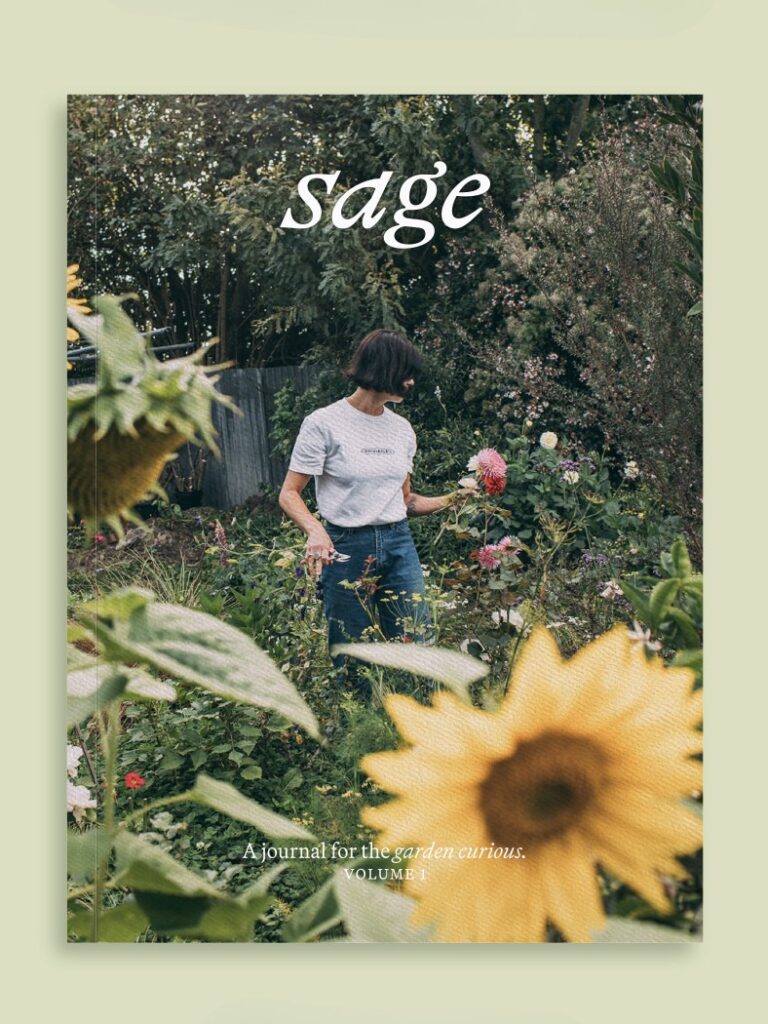Illustrator Jenny Cooper has shaped a soft, expressive garden around her home – The Blue House – in North Canterbury: a gently layered landscape where colour is quiet, form is thoughtful, and every plant has space to breathe.
A story brought to you in partnership with Resene.
When a watercolourist and a professional painter turn their talents to the garden, the result is a carefully crafted masterpiece of tones, forms and texture. At The Blue House, Jenny Cooper and her partner Chris Raateland have created just that in their large Amberley garden: a living canvas that exudes a sense of calm and peace – shaped with the same thoughtful brushstrokes Jenny brings to her illustration work, and Chris to his paintwork.
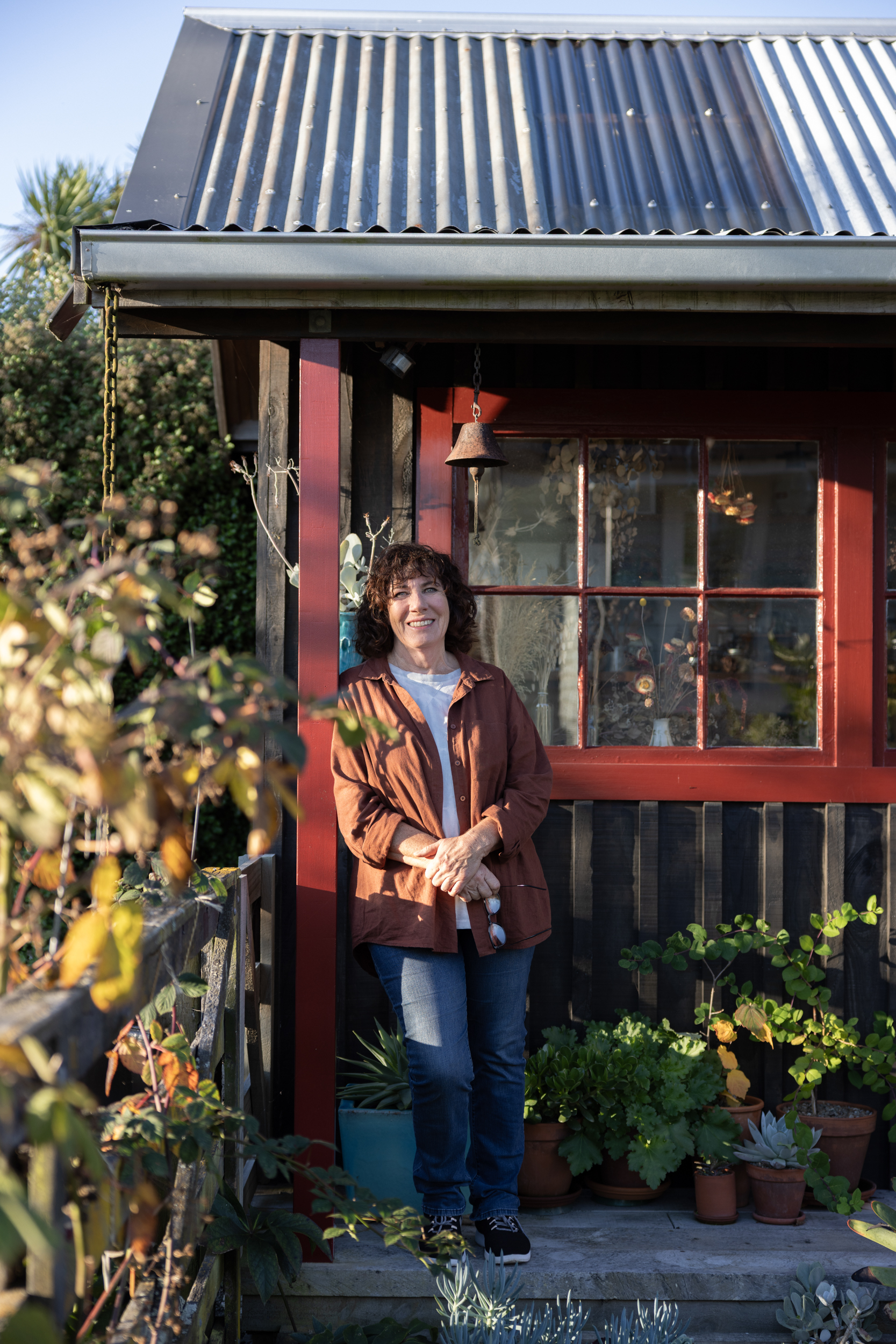
Jenny Cooper, outside of her quaint garden shed at her Hurunui home
Jenny, an award-winning children’s illustrator, and Chris bought their plot – just over an acre of flat land – in 2013. It was after the Canterbury earthquakes that they set about designing The Blue House – something new that echoed the past, built in the style of a traditional wooden Kiwi bungalow. Jenny designed the house herself, taking cues from the homes lost in the quakes and the rooflines of nearby churches. She chose a soft, dusty blue for the exterior – a colour she hoped would sit quietly on the land.
“Our colours out here aren’t bright green – they’re soft, with lots of taupes and browns by midsummer,” she says. “We didn’t want something trendy like black that would date or distract. The garden is the focus, not the house.” The blue is a nod to the traditional tones found on old weatherboard bungalows – though, if she were to choose the paint colour again, Jenny admits she’d go for a slightly “dirtier” blue with a greener base.
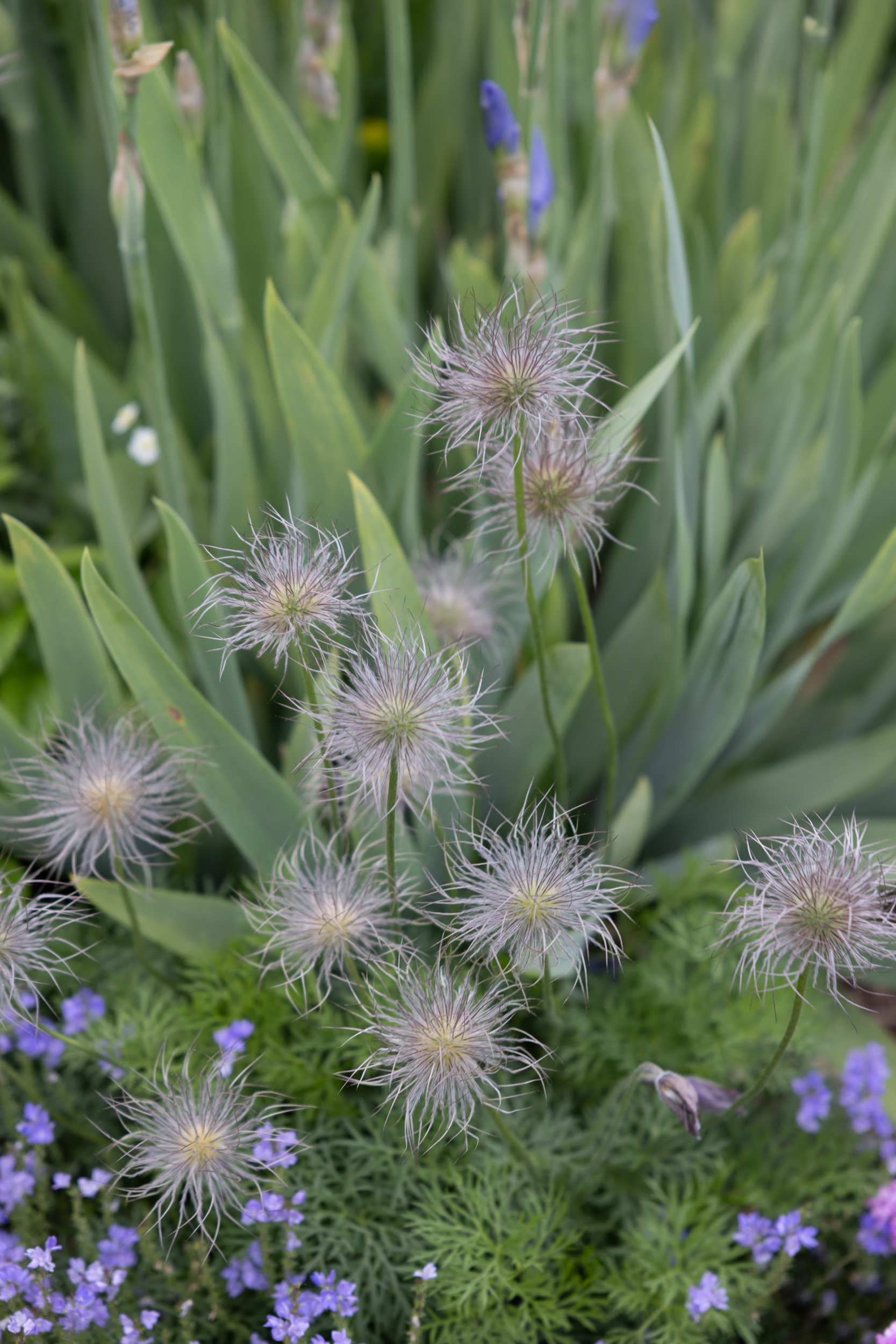
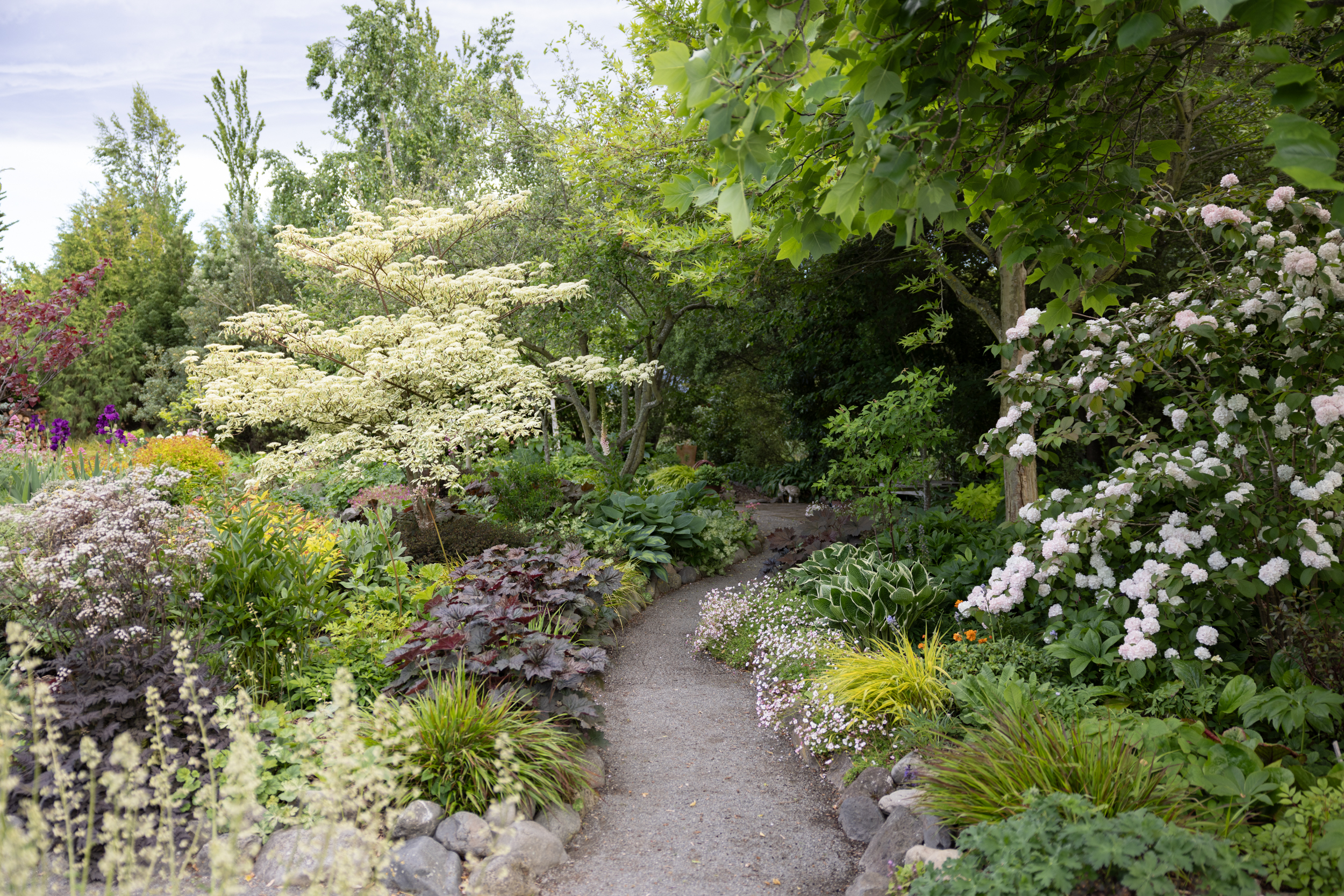
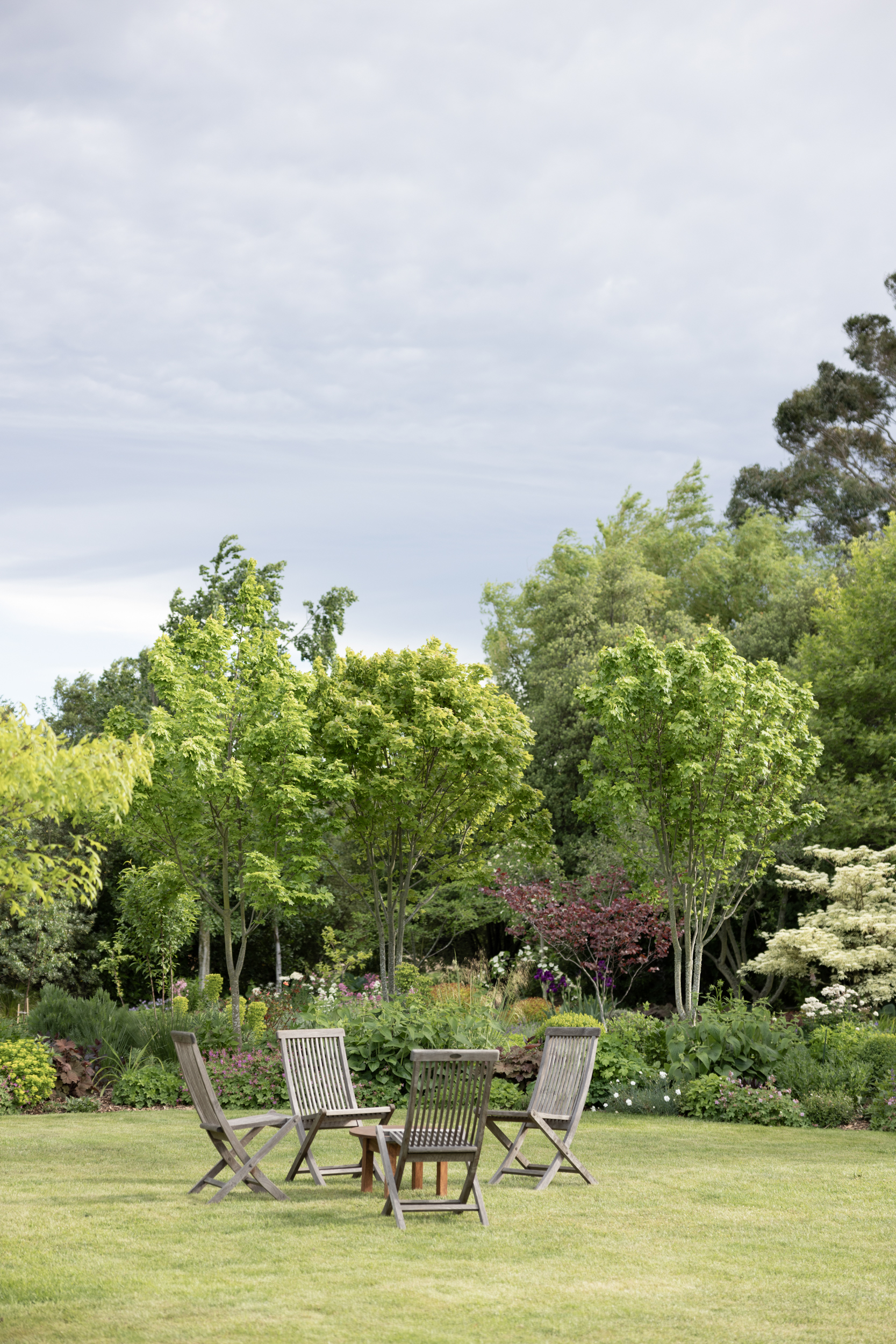
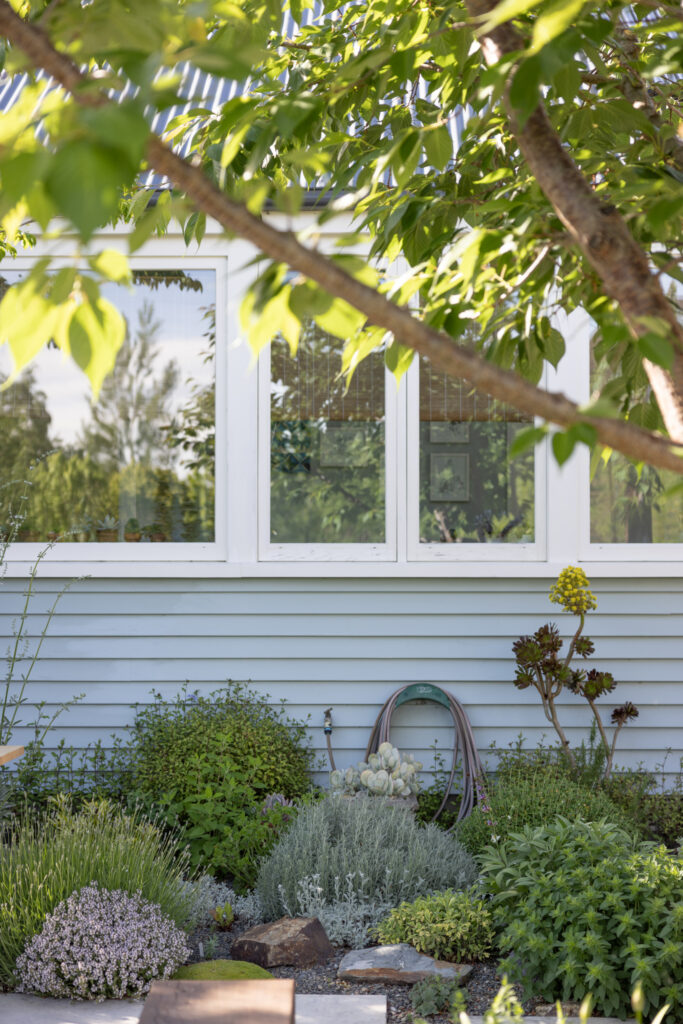
Naturally, the garden was laid out first. Once a North Canterbury sheep paddock, the site offered free-draining soil and a sense of openness. A tall hedge now buffers the easterly winds, and a creek snakes the boundary. The climate, Mediterranean-like, brings hot dry summers and winter frosts. Fierce nor’westers demanded a resilient garden. Jenny’s response was to work with the elements, letting climate shape her palette and plant choices.
Jenny says her mum was the best gardener she knew – ahead of her time in the 1970s, following Sissinghurst Castle Garden and the ideas of British horticulturalist Gertrude Jekyll. As a young girl, Jenny had her own little garden on the family’s quarter acre section in Christchurch. “Just a shady spot under a blossom tree where we had a tiny, mini forest at the bottom of the garden.” That early connection to trees never left her.
“I think that’s probably why I love gardening in the shade of trees now. There’s something about the human genome that loves a little structure above our heads – I think humans are happiest sitting under a tree,” she muses. It’s why The Blue House features so many multi-trunked trees. “We all love to reach out and touch a tree trunk as we weave around a garden. It adds to the peacefulness.”
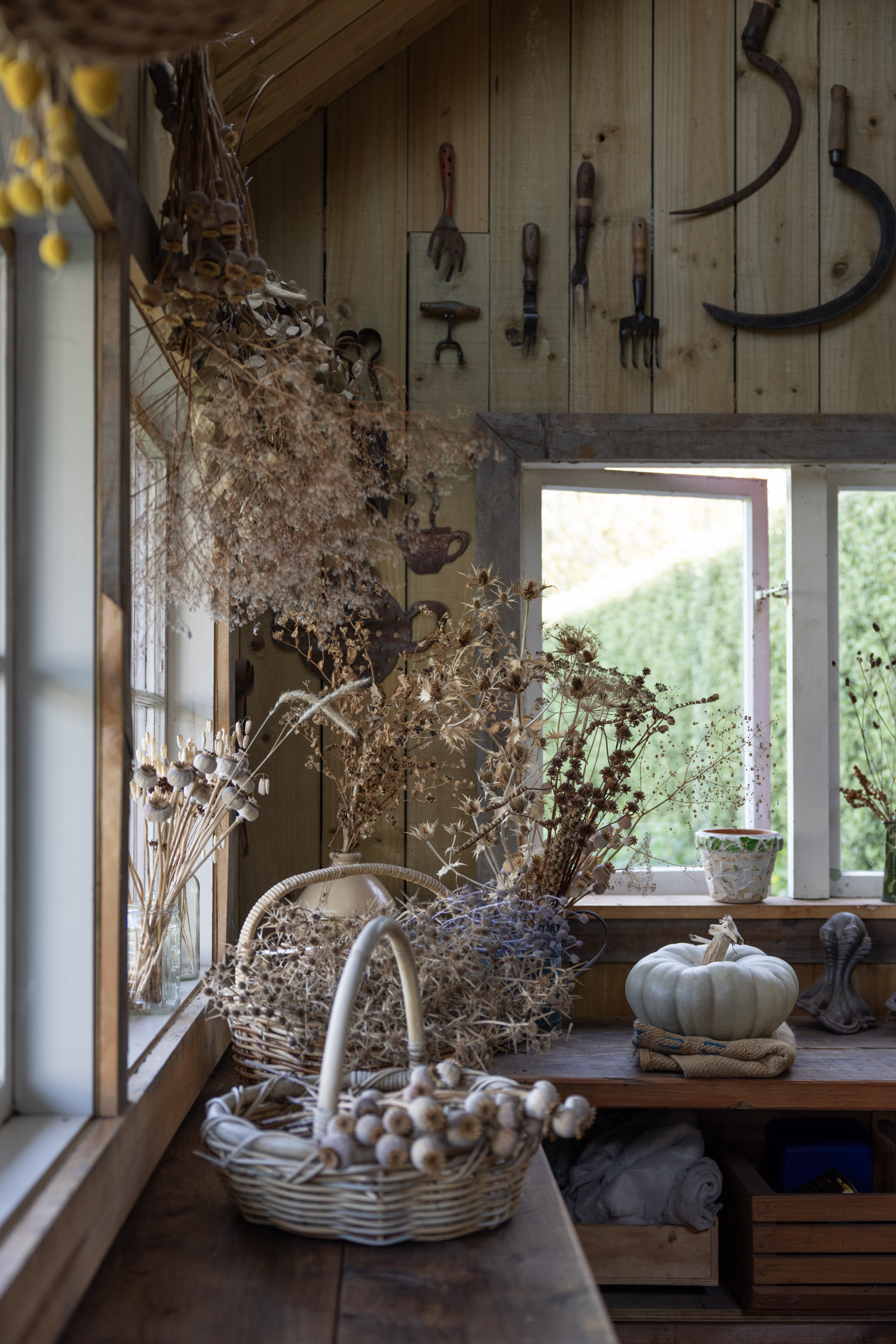
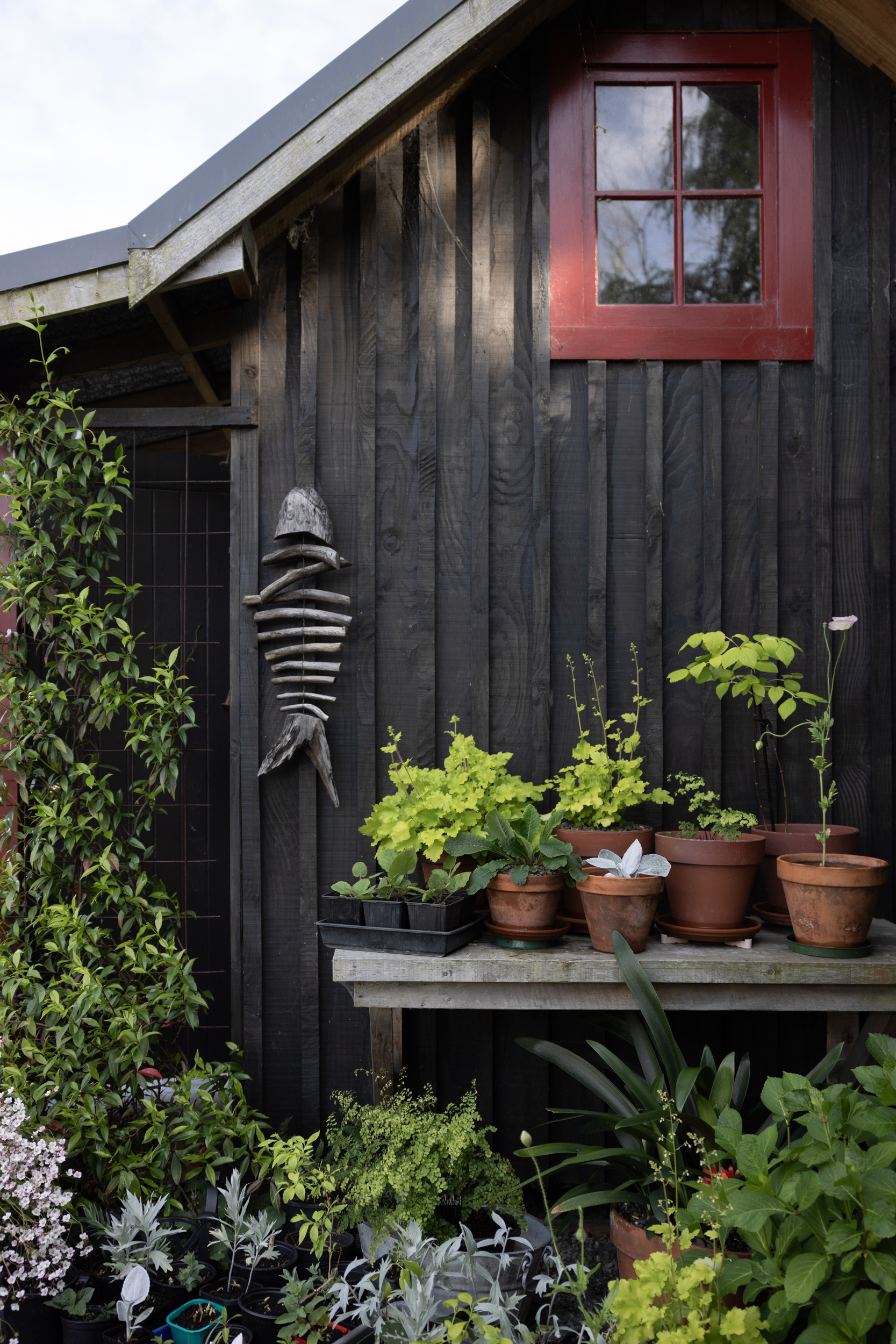
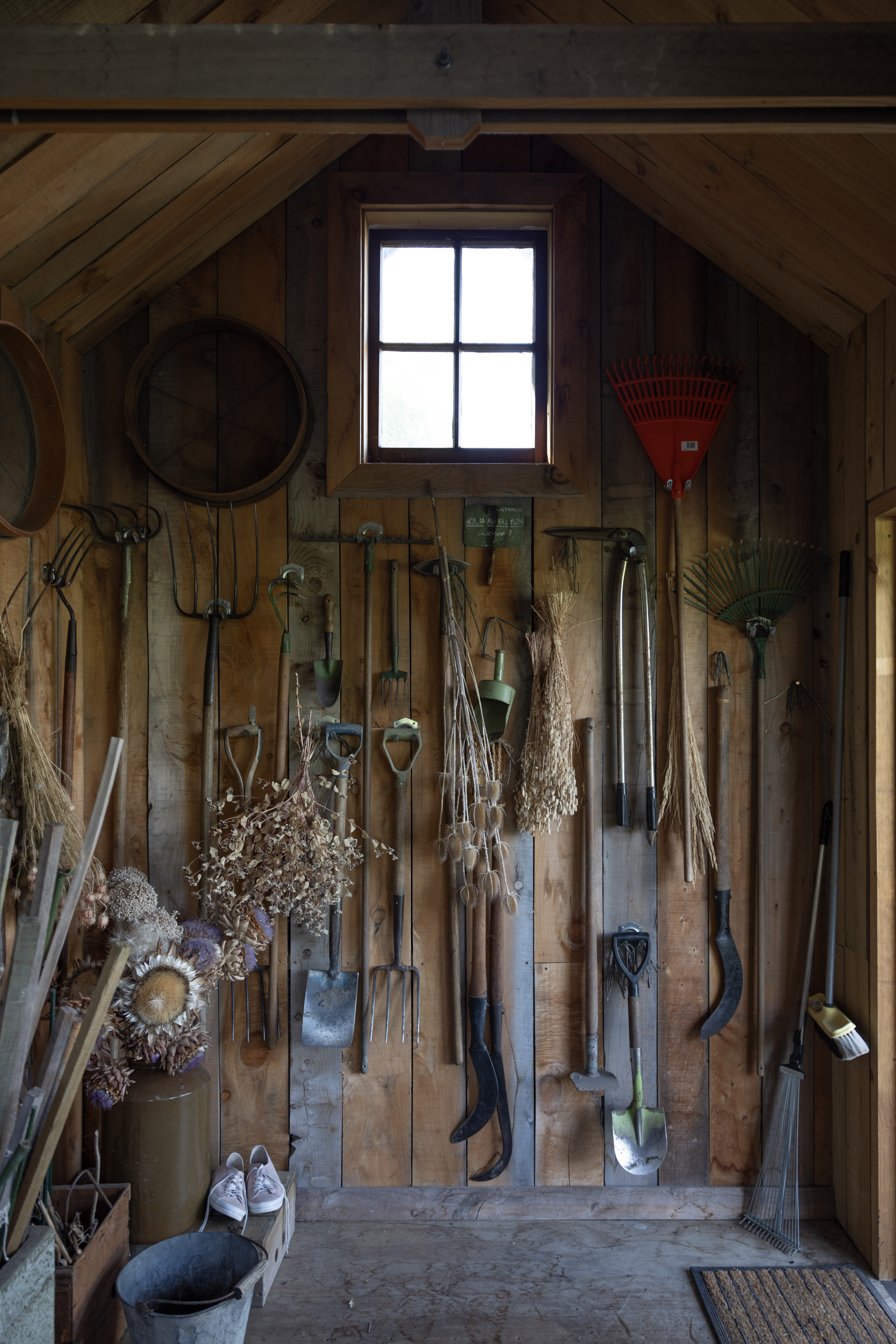
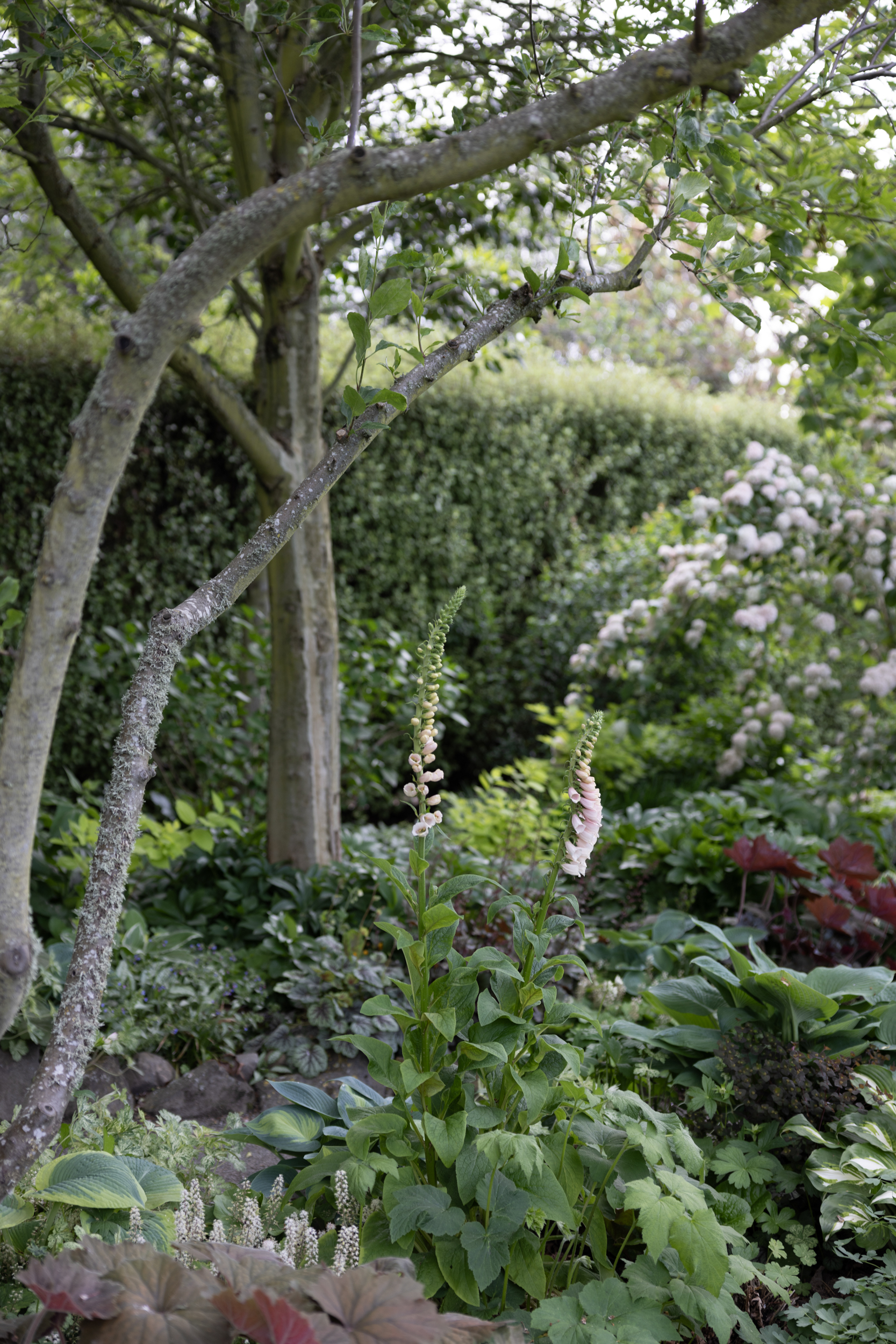
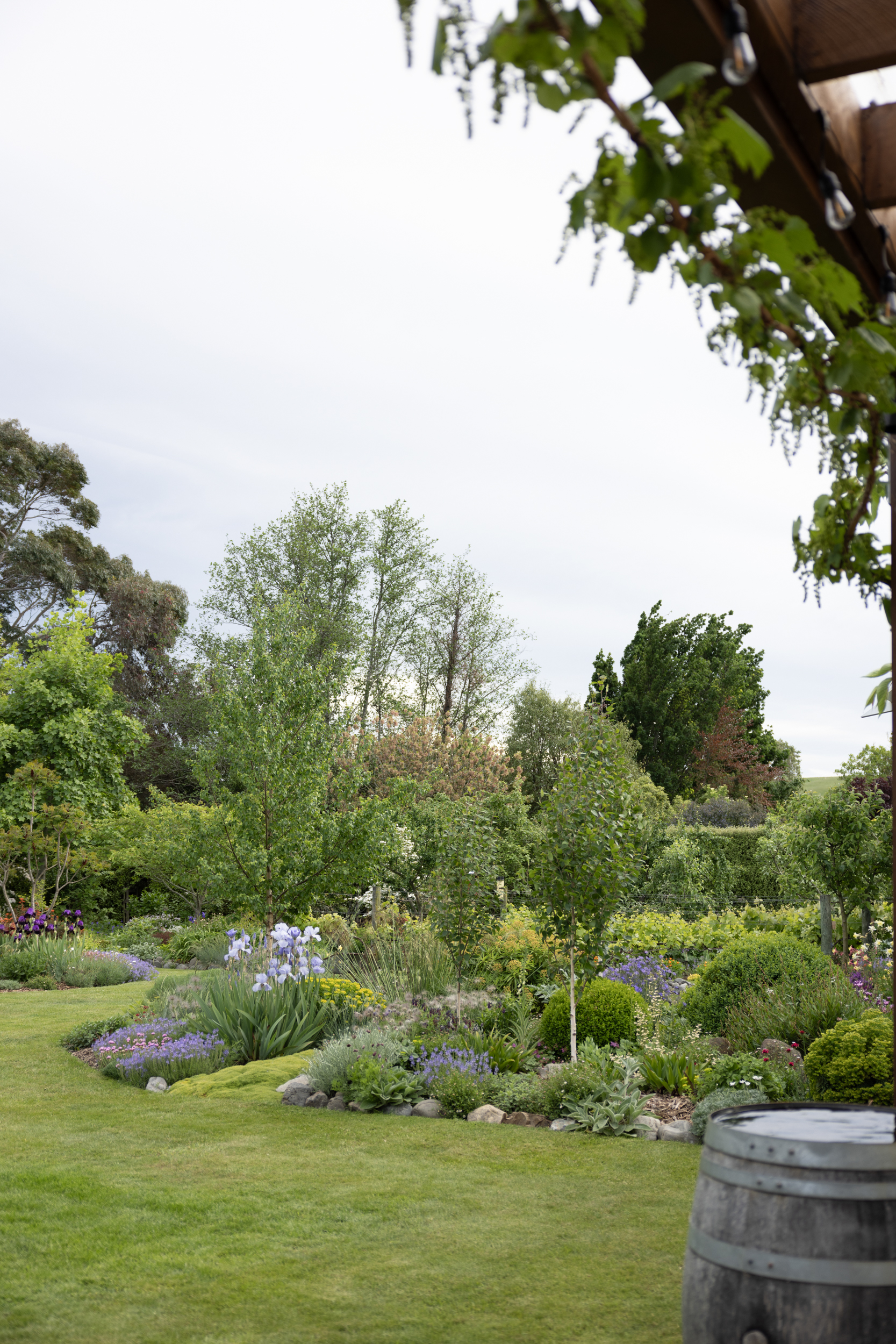
Starting from scratch with no reference point was daunting, so Jenny turned to her local library to study design principles. She began with circles – seven-metre-deep beds to balance the six-metre-high house. These broad beds anchor the house and provide structure, while allowing room for looser, naturalistic planting. Curved paths guide visitors past ‘dry gardens’ and succulents, a small orchard and edible garden, and a shady understorey beneath mature trees. It’s a garden that reveals itself slowly – not in straight lines, but gentle meanderings.
From the outset, colour was central to creating calm. Jenny’s approach – both in her use and restraint of colour – reflects her painterly instincts. She follows the logic of the colour wheel, favouring shades that sit alongside or opposite green – blues, mauves and purples – while avoiding bright reds, pinks and yellows that “distract the eye”. Sometimes nature has other ideas though, and when a clump of bright yellow dahlias popped up one summer – she promptly gifted them to admiring visitors!
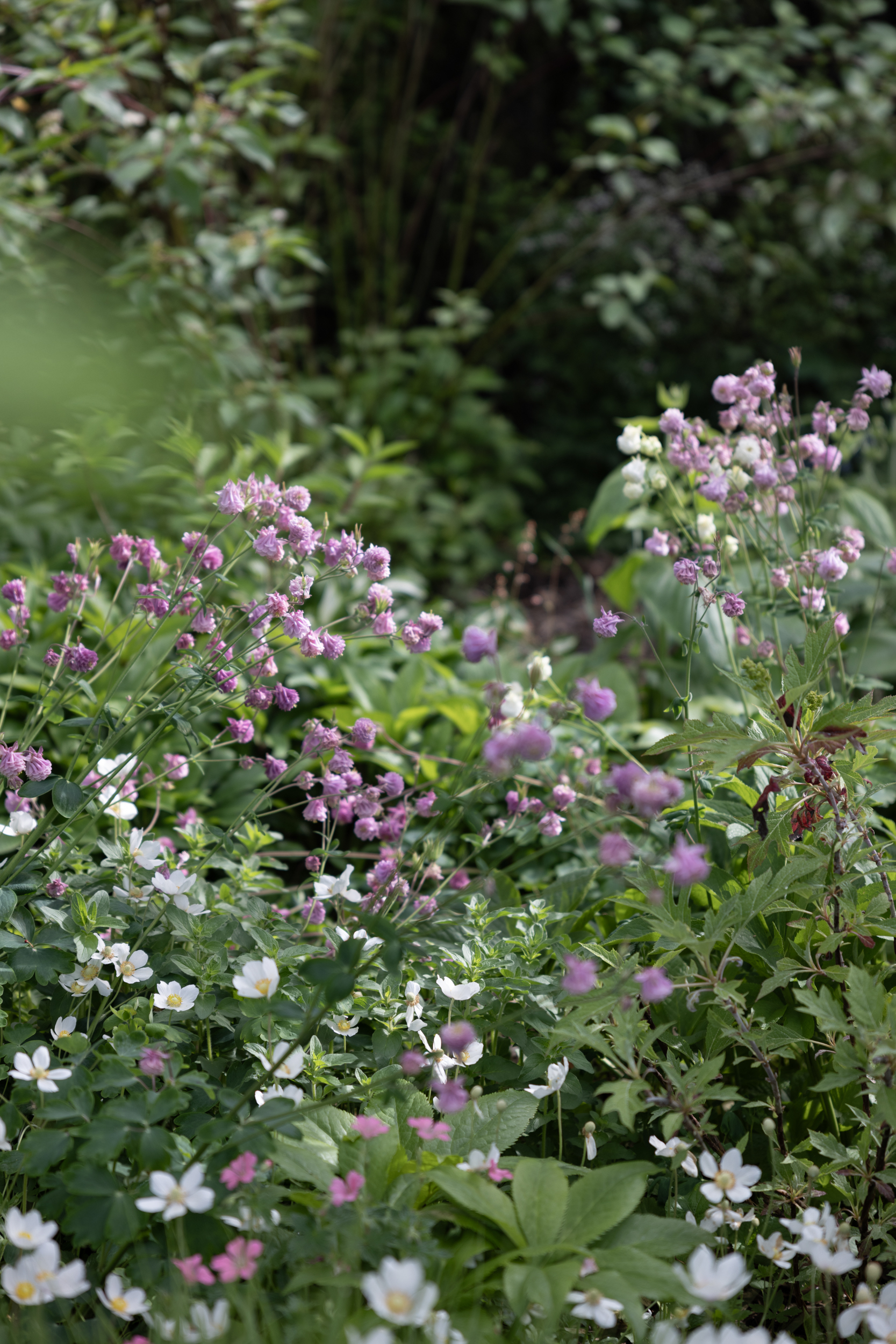
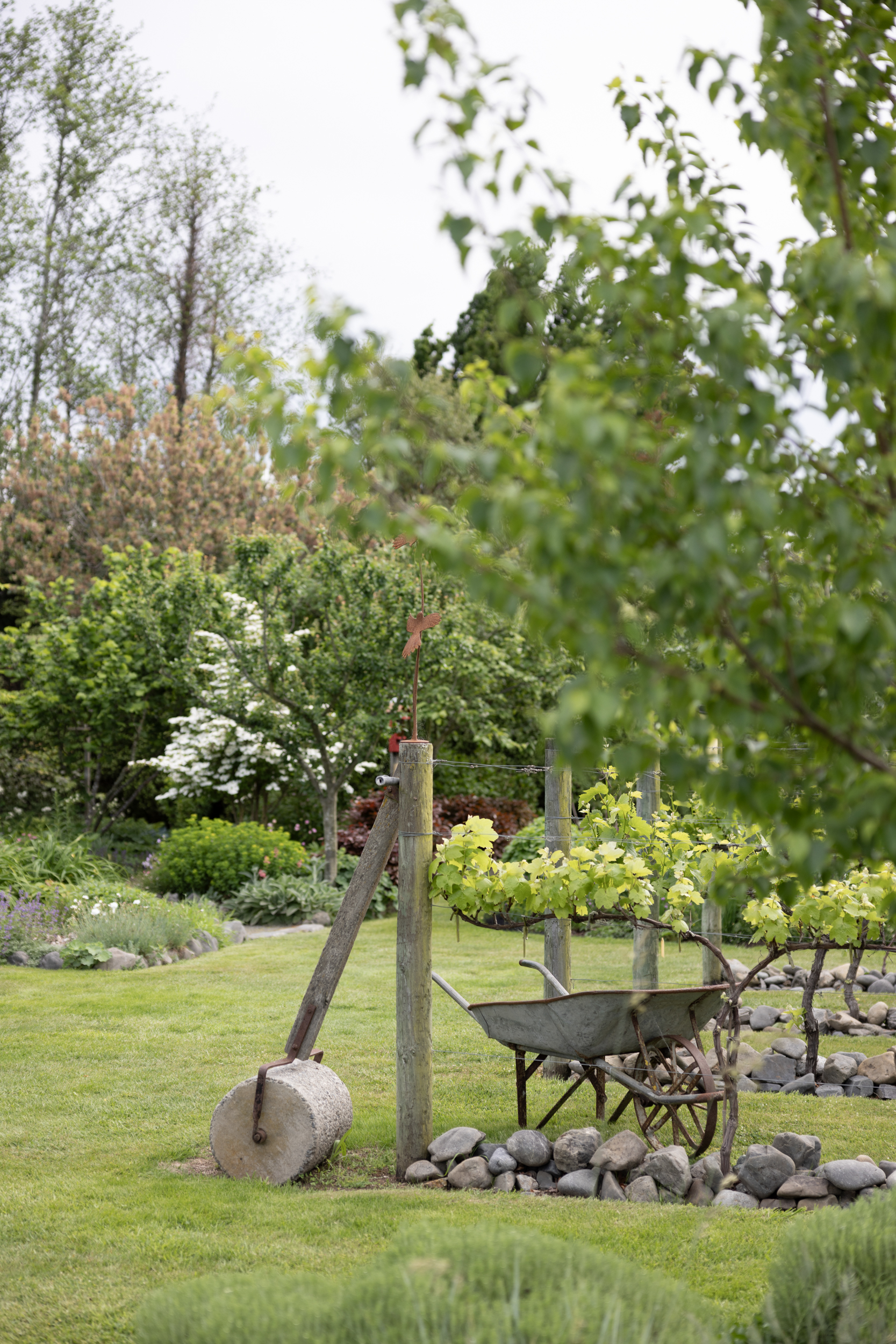
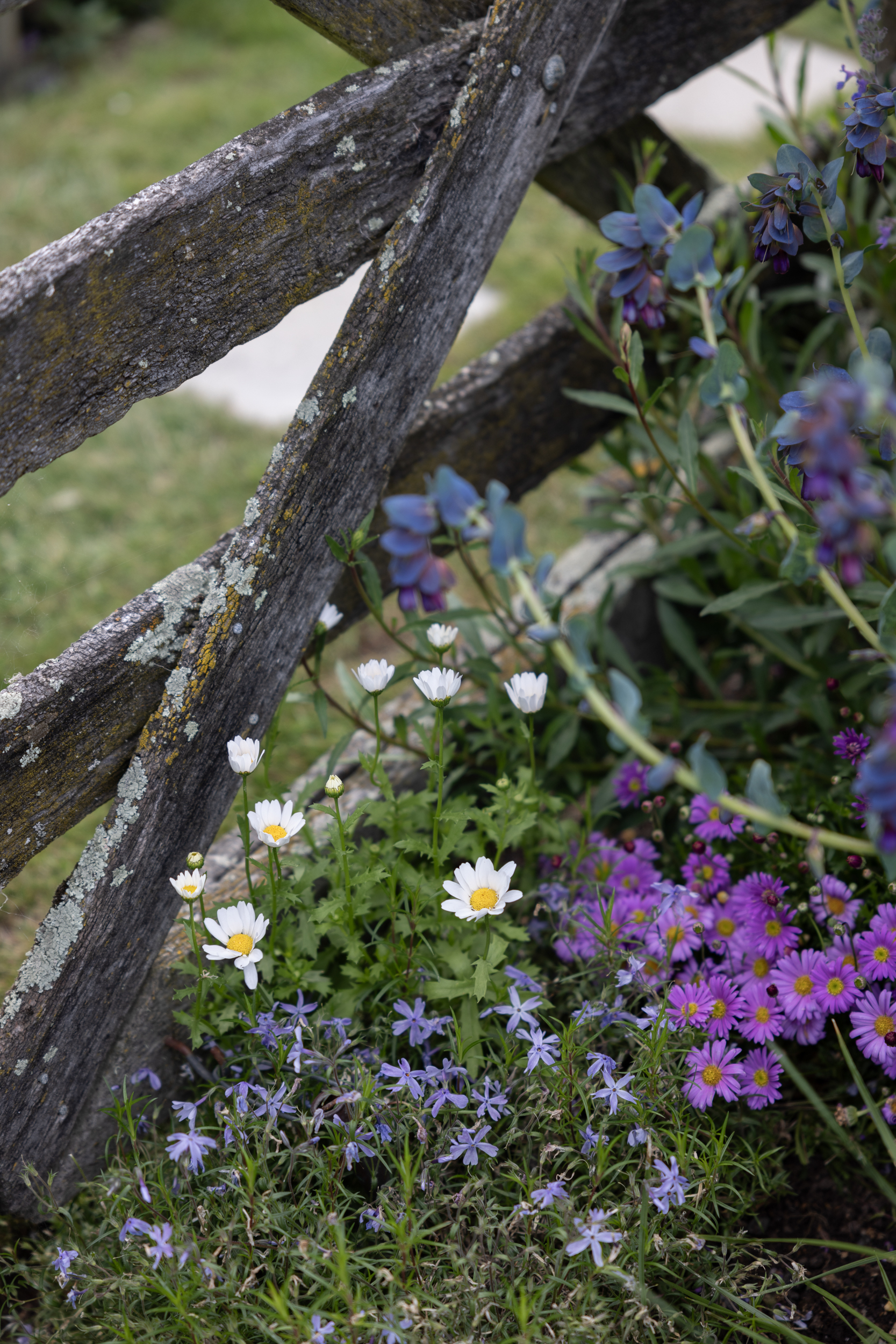
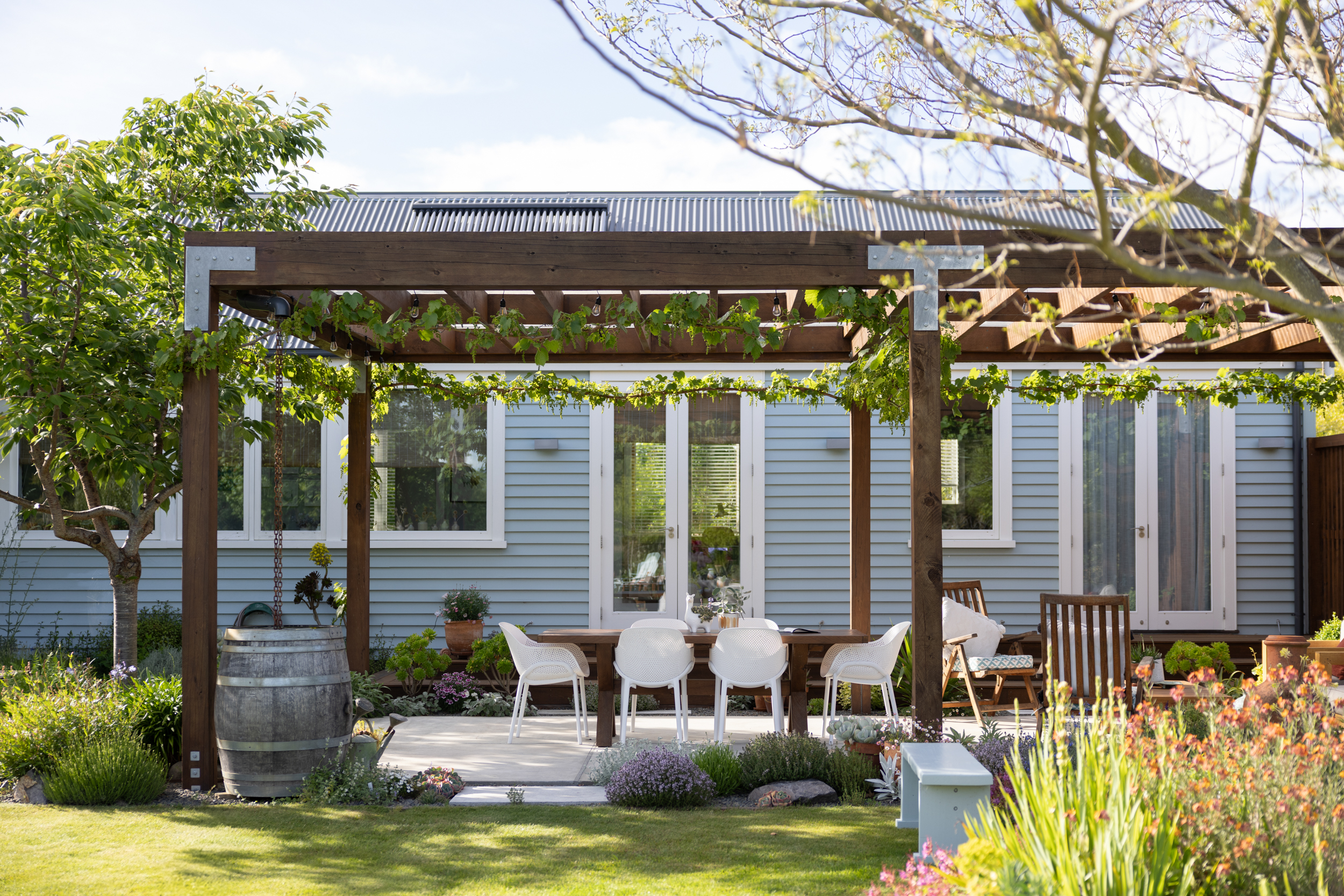
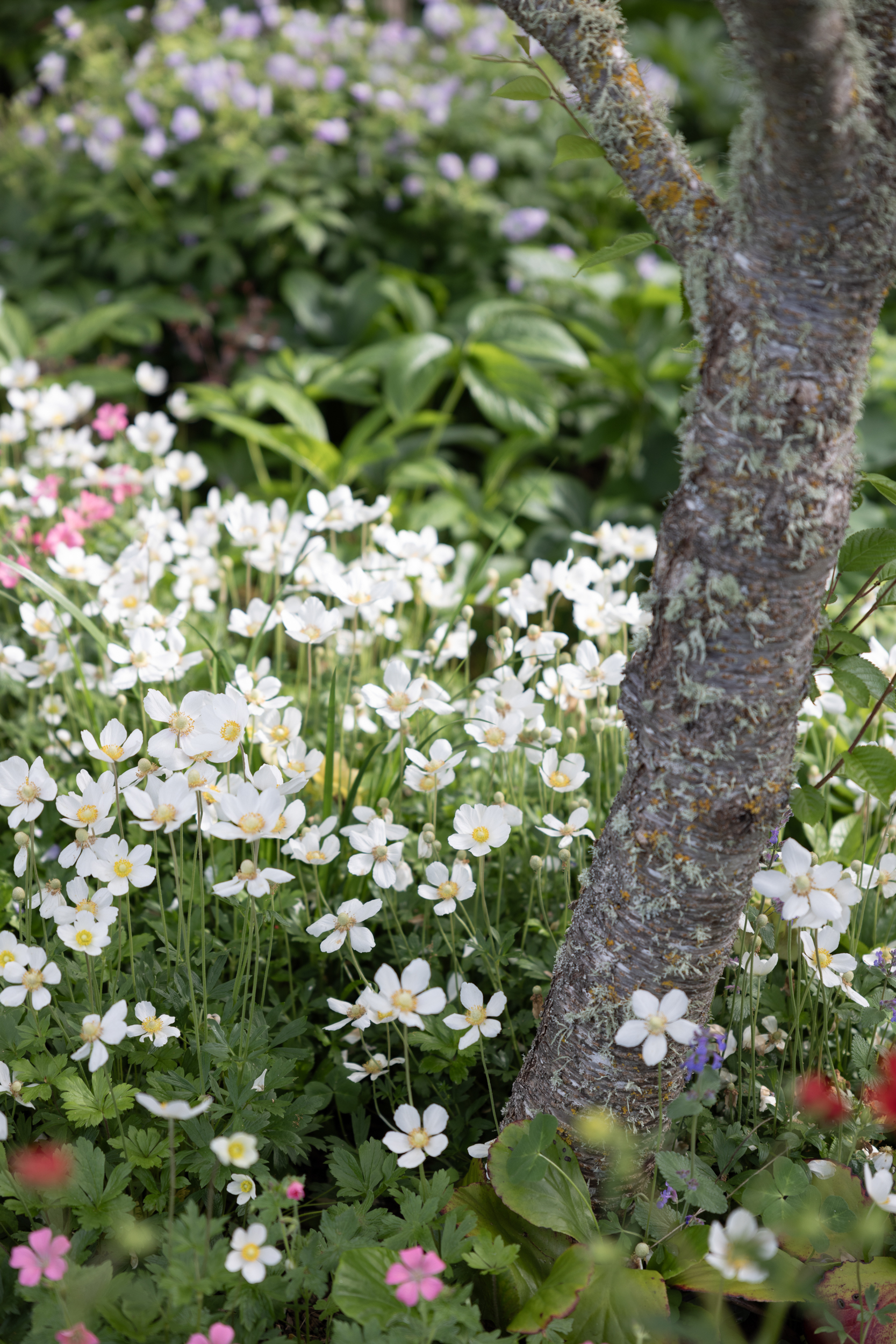
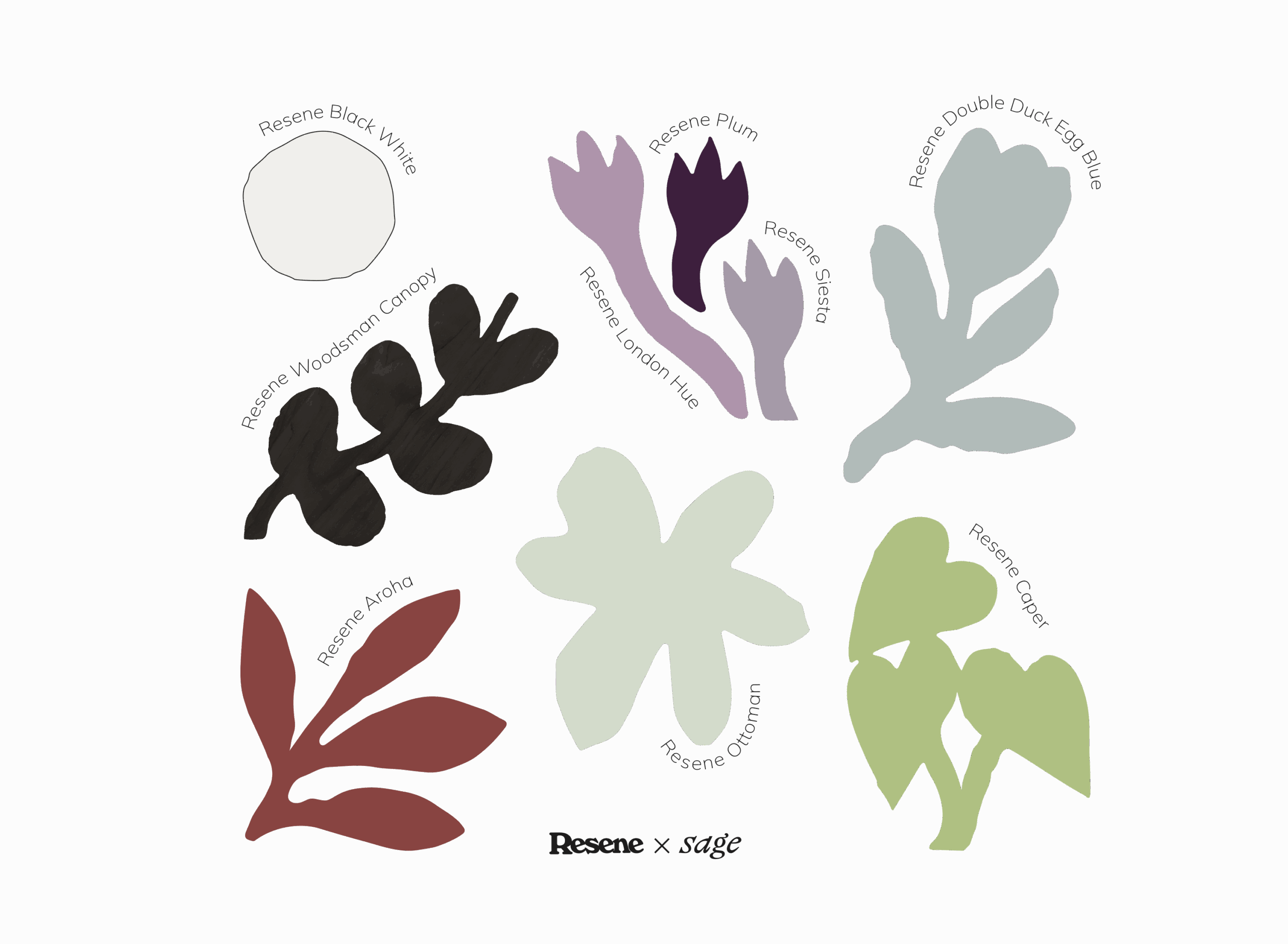
The palette of plants | In this collaboration between Sage Journal and Resene, we’re excited to explore how colour transforms outdoor spaces. This curated colour palette draws inspiration from the garden, its surroundings, and the personality of the gardeners who tend it. Just as the colours inside a home reflect its occupants, the shades chosen for a garden can reveal the gardener’s unique journey, extending creativity from indoors to out. We hope this story inspires you to see your own garden as a living work of art, shaped by both painted and planted colours throughout.
Silver foliage like Artemisia ludoviciana ‘Valarie Finnis’, Stachys byzantina (Lamb’s ears) and cardoon (Cynara cardunculus) add a slightly blue base to the garden to complement mauve plantings and soft lemon yellows – like Coreopsis verticillata ‘Moonbeam’ and Achillea millefolium ‘Hella Glashoff’.
When the naturalistic garden puts its autumn coat on, Jenny says it’s like having a fire on outside – referring to the glowing leaves of grapevines, Amenchelier, ornamental pear and ‘Mount Fuji’ cherry trees. “There’s such a soft colour palette with beautiful textures. A little bit of black from the stems of Phlomis russeliana and centres of Rudbeckia ‘Goldsturm,’ and the darkening Sedums as they age,” Jenny says.
This is where Jenny’s artistic eye comes through. The Blue House is a long-season garden, where seedheads are left for the birds and grasses get only an annual winter chop. So when the bright greens of spring have faded, it’s the seedheads and soft muted tones that hold the space. “That washy complexity is what I love,” Jenny says.The Blue House’s calming landscape comes from careful layering of a limited colour palette and simple, repeated shapes. Ornamental grasses bring a softness and movement – Poa cita, Calamagrostis x acutiflora ‘Karl Foerster’ and the coppery haze of Anemanthele lessoniana – while branching trees offer refuge and shade for mounding clumps of Festuca glauca (blue fescue).
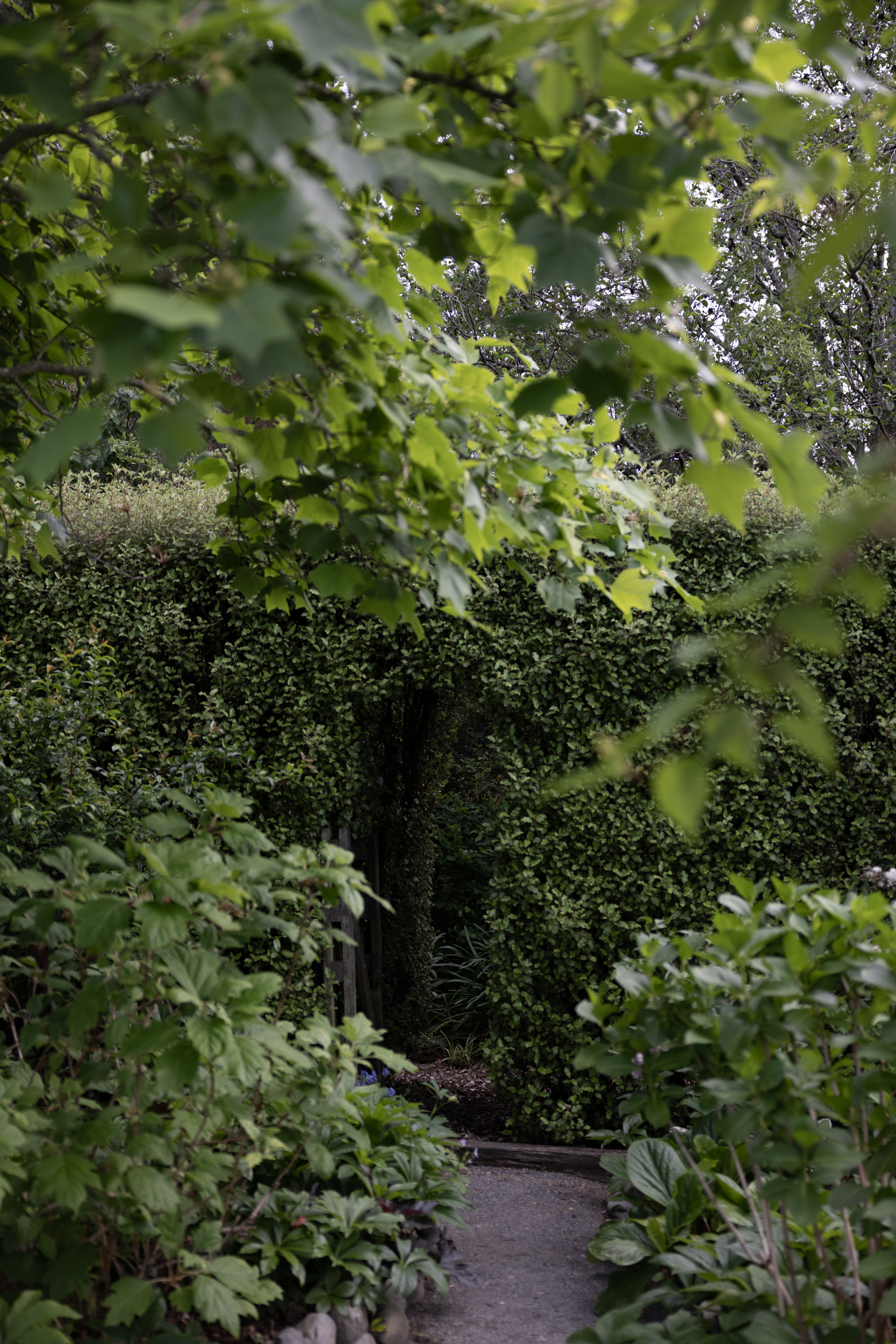
x
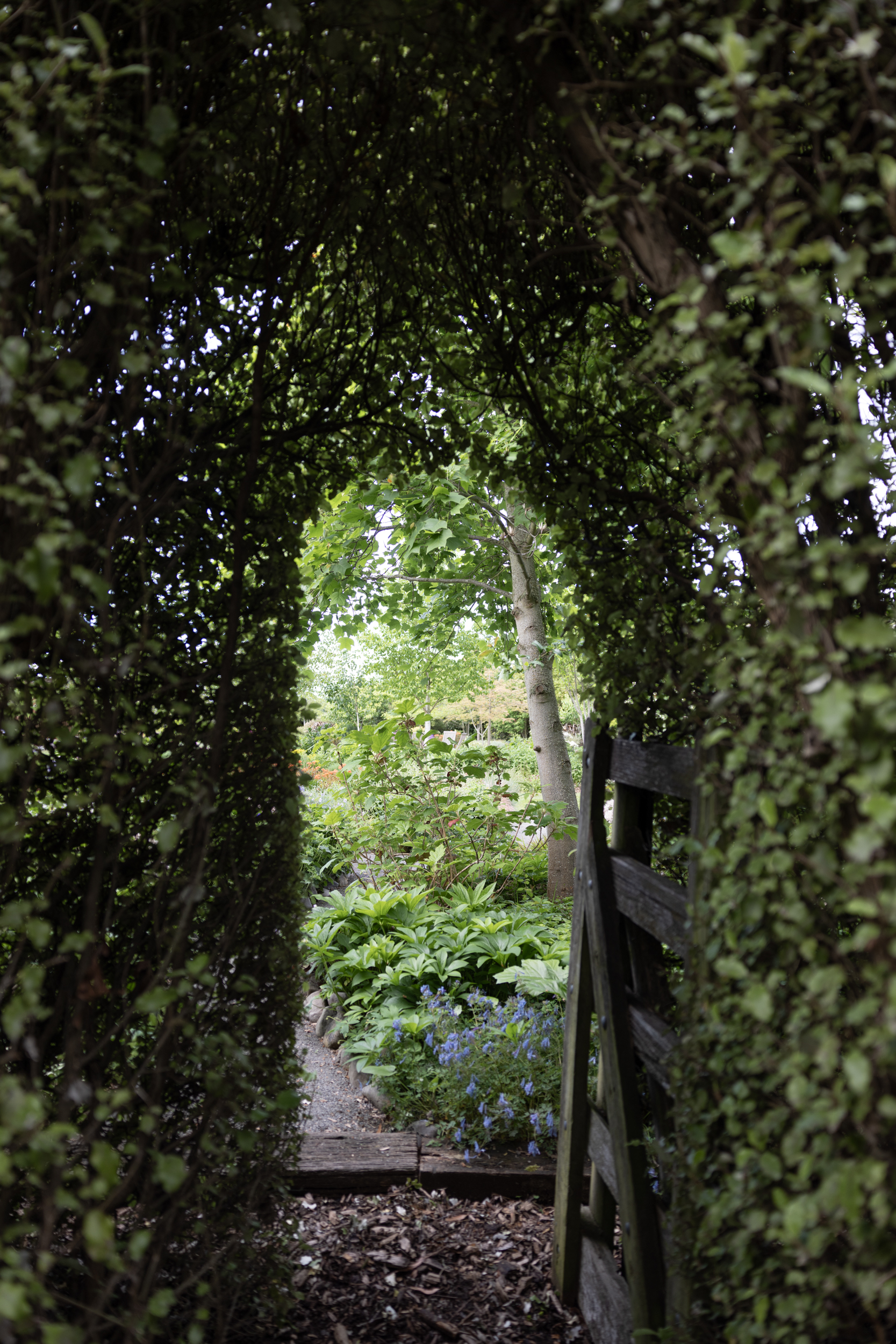

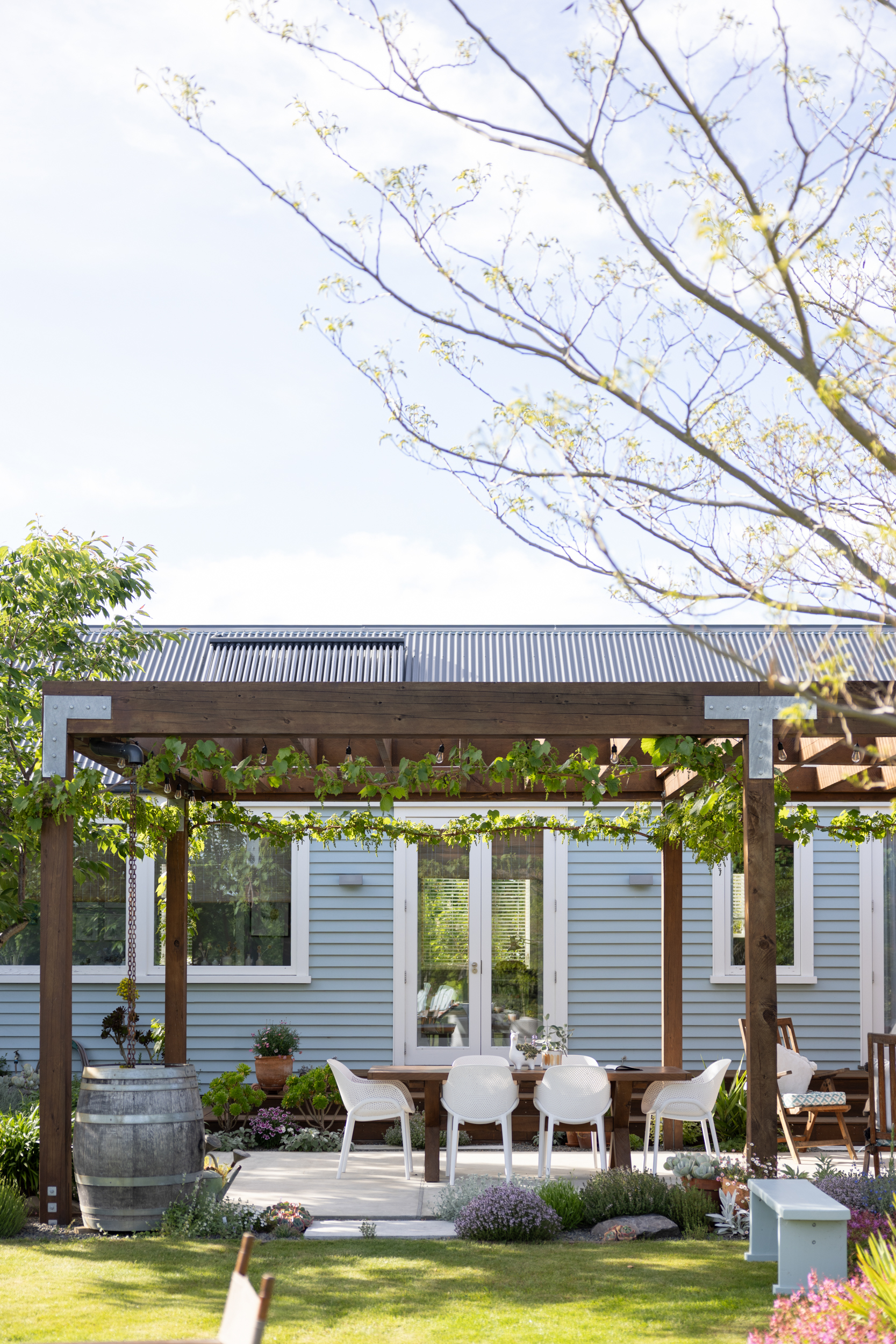
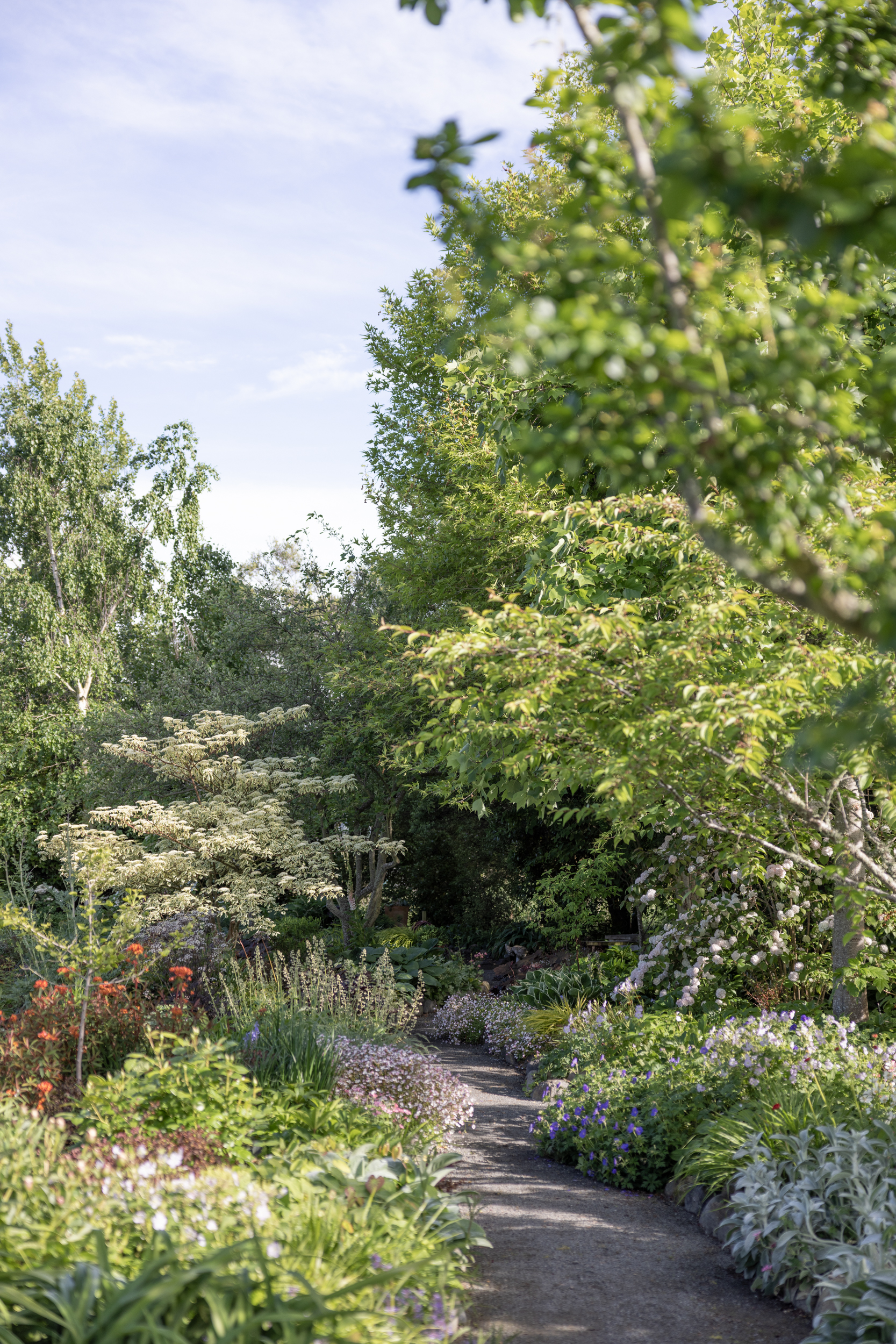
Jenny likes to give her plants space. “The garden feels calmer when a plant can fully express itself,” she says. In the ‘dry garden’ especially, plants thrive when they’re not competing for water and nutrients. Jenny notes that plants like lavender and salvia hold their form more tightly and produce more intensely coloured flowers when their neighbours are kept at a distance.
For new gardeners, Jenny suggests being realistic about the time you can give to gardening. A few pots by the back door can be a good start. Otherwise, she recommends creating deep planting beds, limiting your colour palette, and to plant trees – “It’s the best gift you can give to yourself – and your neighbours.”
Each spring, The Blue House opens to visitors during the Hurunui Garden Festival, and Jenny shares the garden’s changing moods on Instagram and her website – beautiful observations from her painter’s eye in every season.
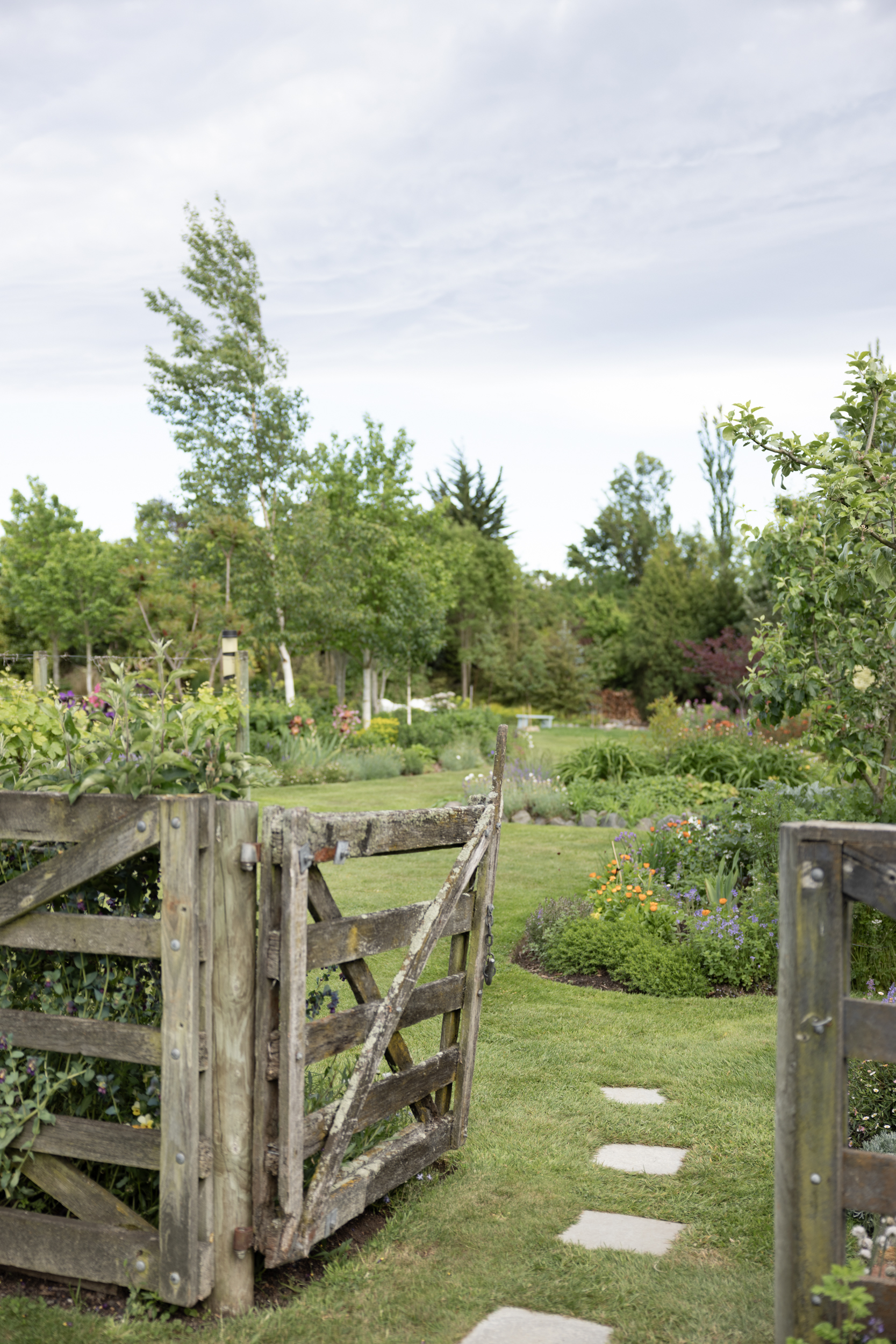
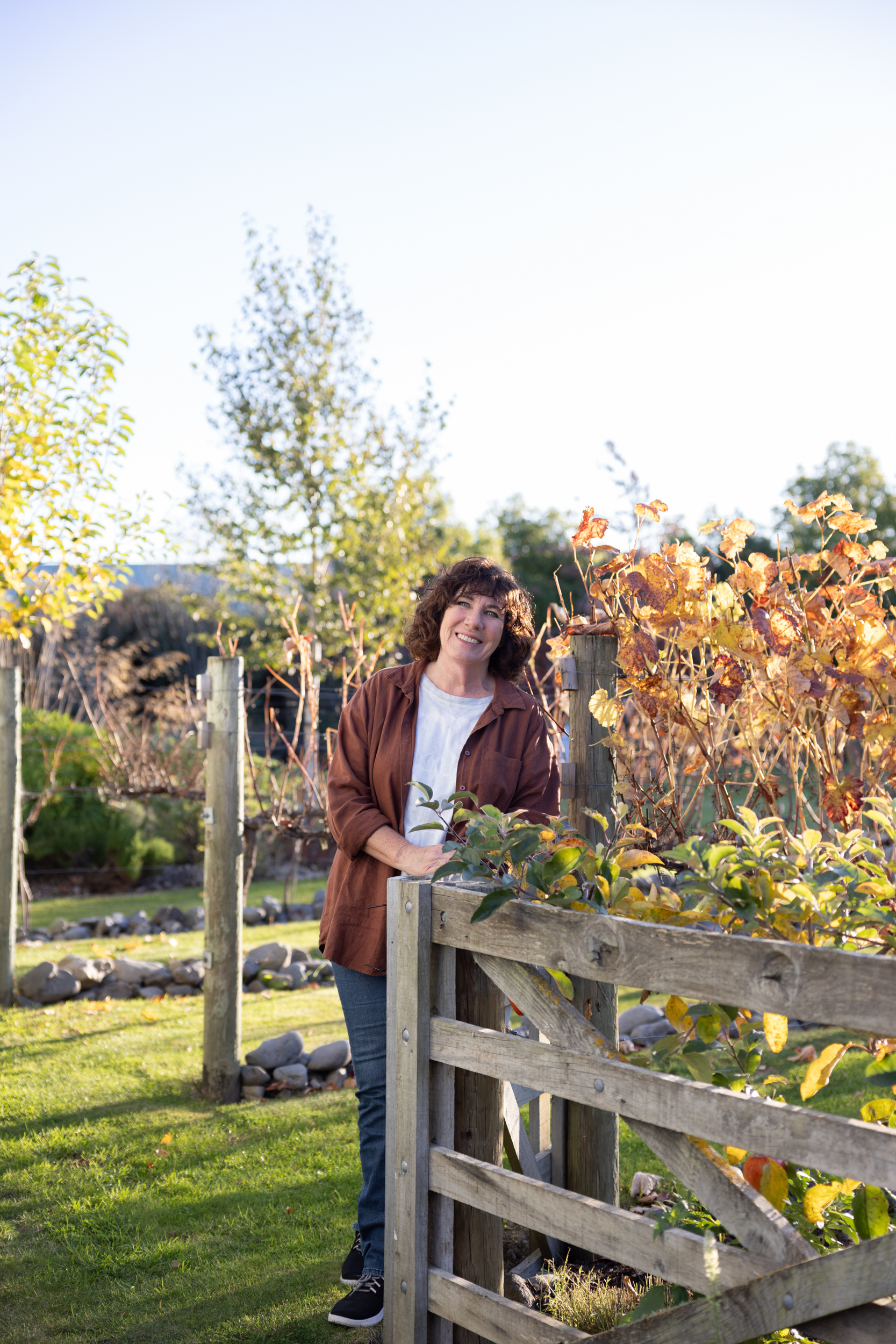
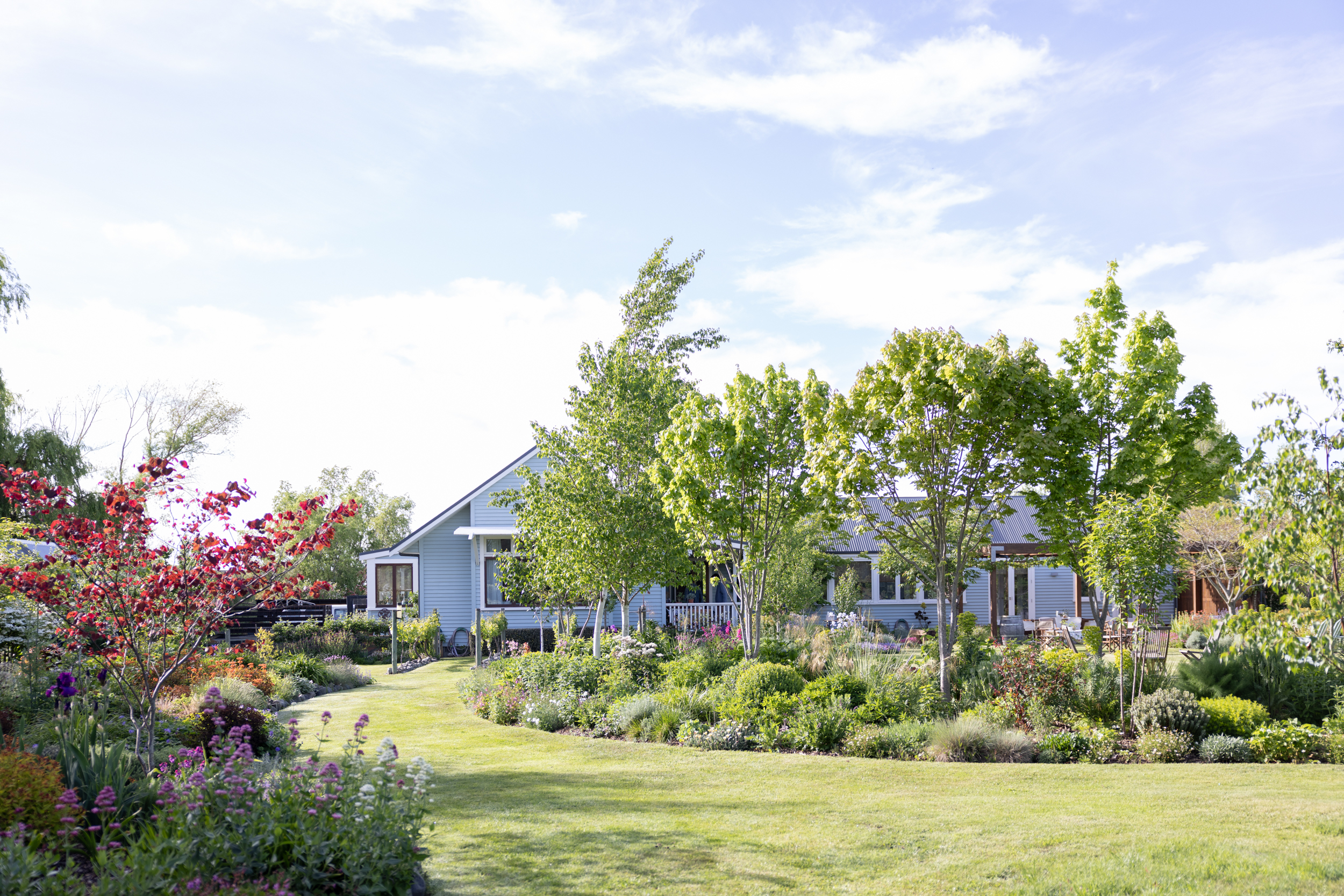
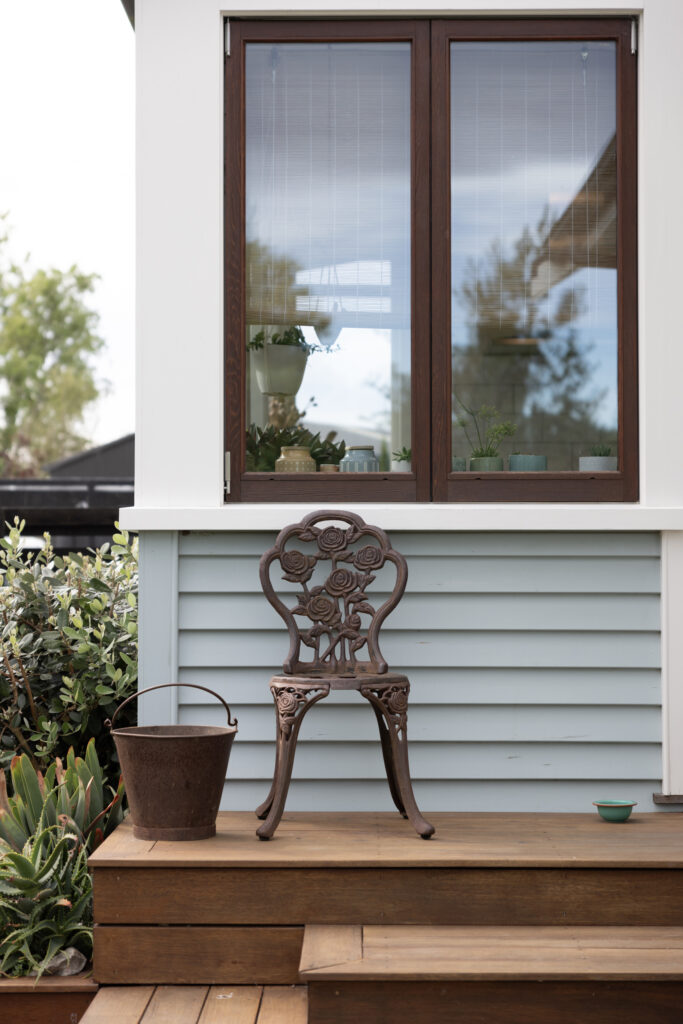
—
Resene tips:
— Painting your house exterior blue
Blue is a natural choice for house exteriors, especially in rural or coastal settings where it echoes the tones of sky and sea. But getting it right means choosing a blue that feels timeless and grounded – not too bold, and not too “trendy”.
To create a look that sits softly in the landscape, opt for muted blues with a good dose of grey or green. These tones are especially versatile and tend to pair well with a wide range of landscape styles. Blues with grey-green undertones work particularly well with traditional weatherboard cladding (think: bungalows and villas).
Popular blue picks for home exteriors include Resene Duck Egg Blue, Resene Periglacial Blue (from the Karen Walker Paints collection), Resene Nebula, Resene Longitude and Resene Escape – all of which blend gently with soft greens, taupes and neutrals in surrounding landscapes.
For heritage homes, consider a bolder classic like Resene Bali Hai from Resene’s Heritage range.
In our colour palette above, we chose Resene Double Duck Egg Blue for its softness and quiet depth – a shade that feels settled rather than showy.
If your home sits in strong sun, consider going a couple of strengths darker than your first instinct – the Southern Hemisphere light can wash colours out quickly. For shady or sheltered houses, a lighter blue can help lift the exterior.
To get it just right, use Resene testpots and paint two coats either directly on your cladding or on a large piece of card. Move the samples around different parts of the house to see how they look in both shade and full sun, at various times of day. The same blue can appear dramatically different depending on light and surroundings.
And of course, the best blue is the one that makes you feel at home. Choose a colour you’ll love living with – not just one that looks good on the chart.
